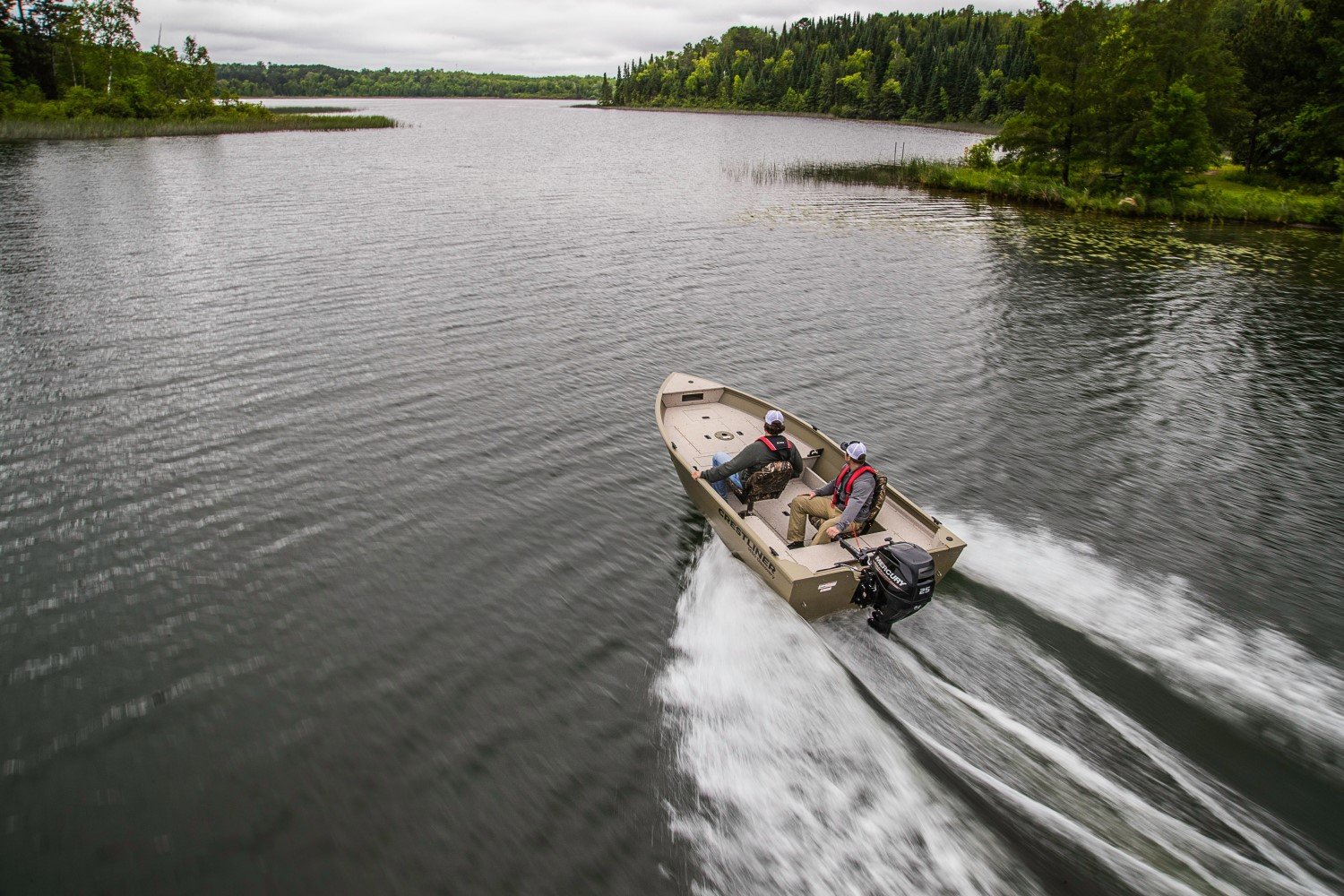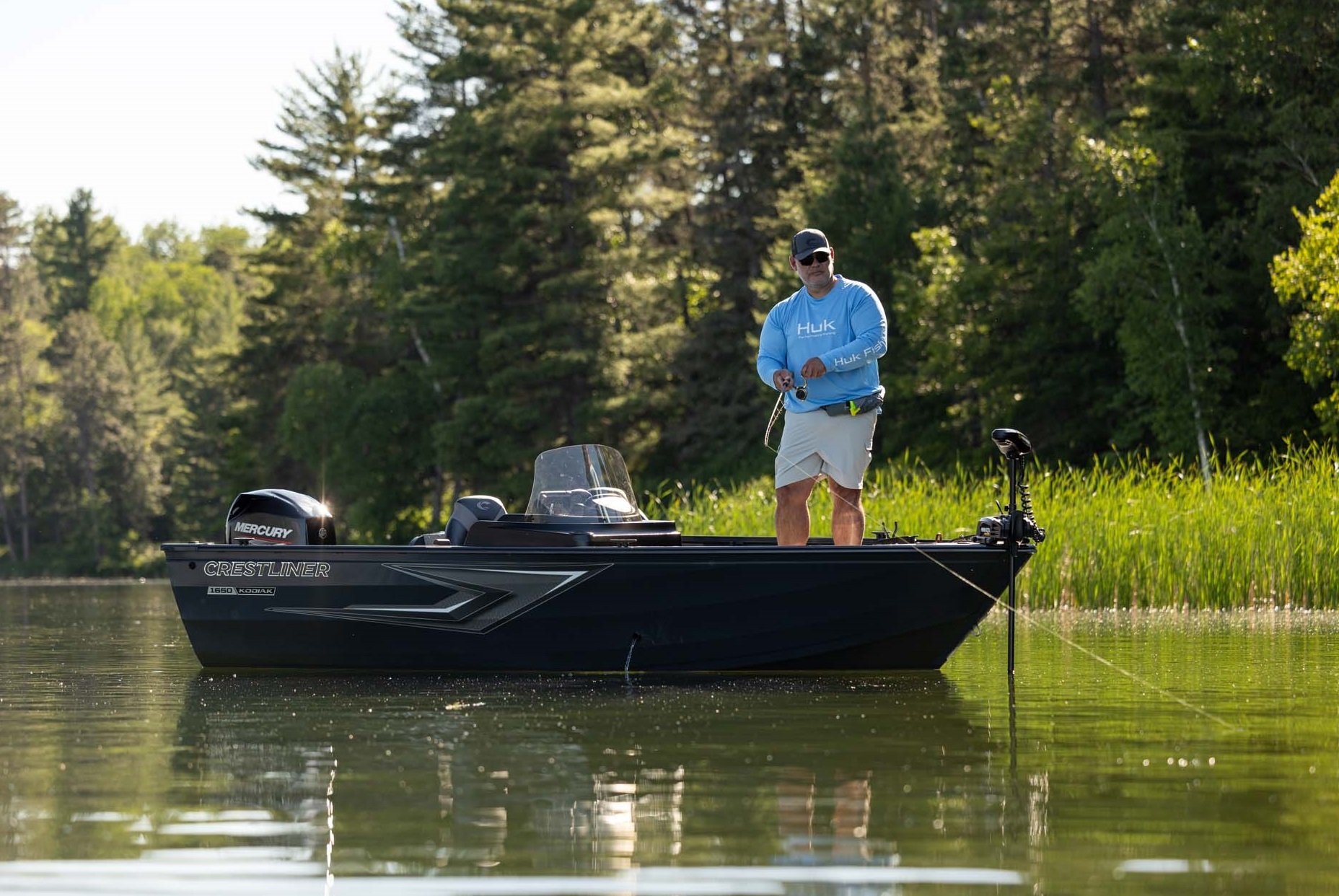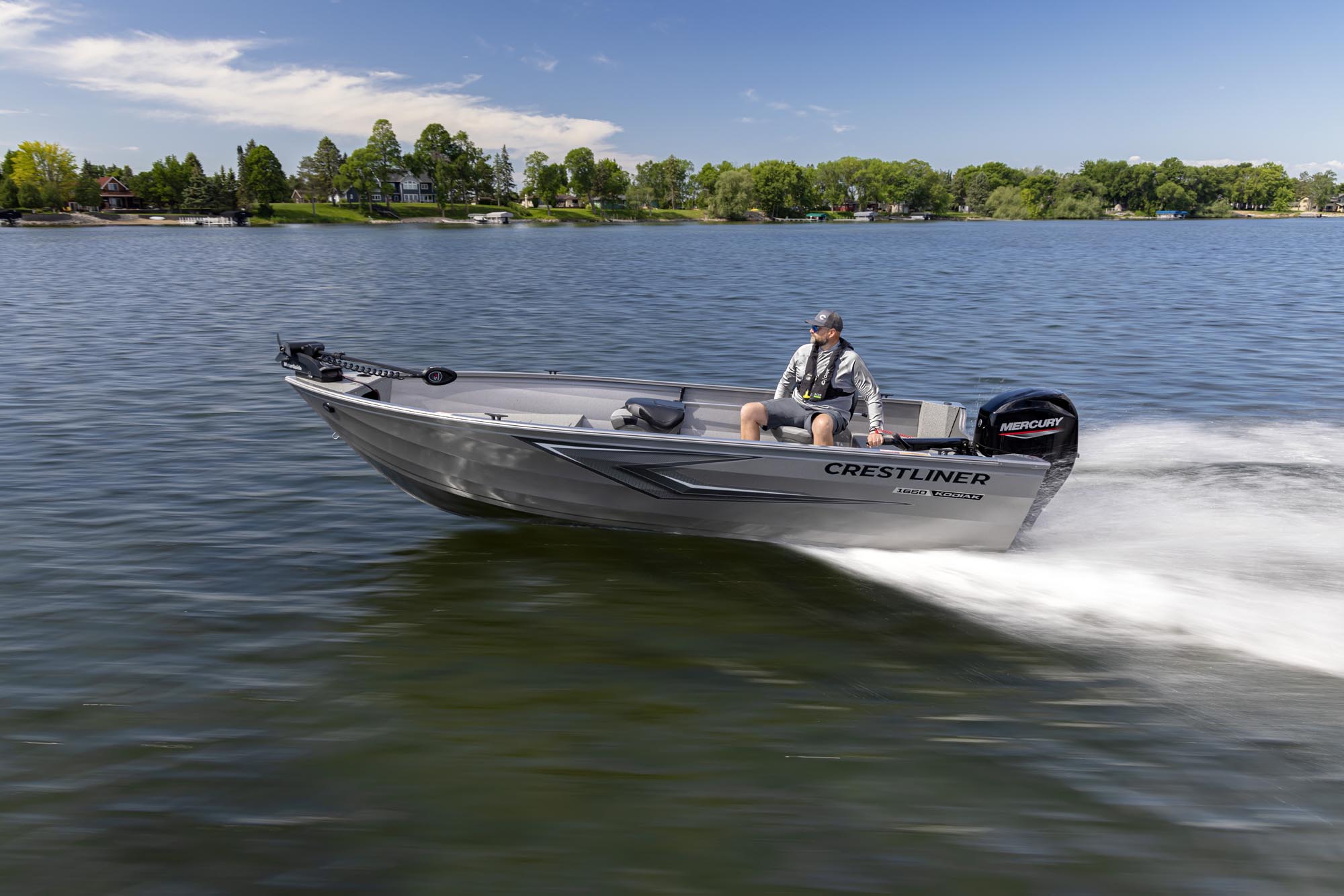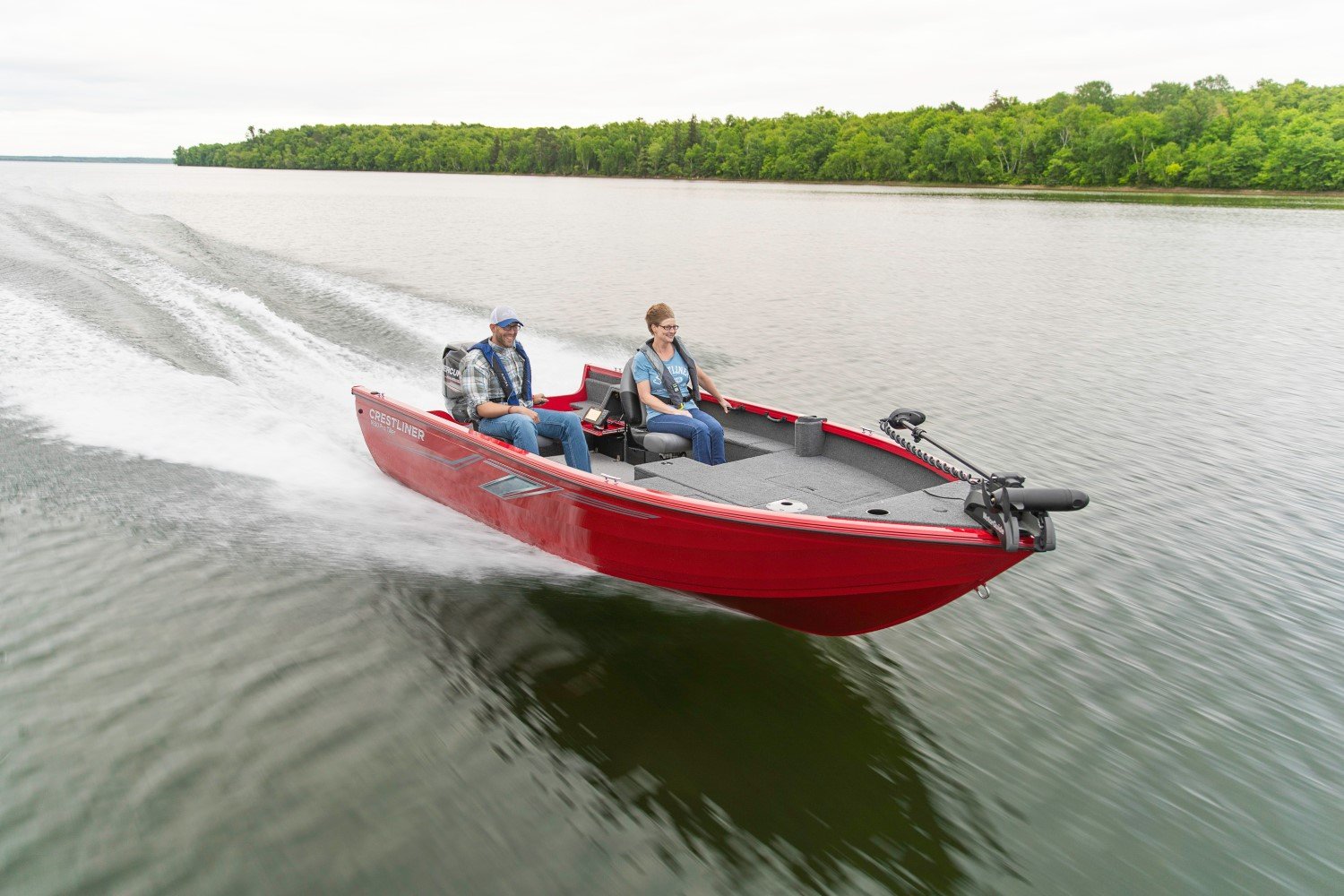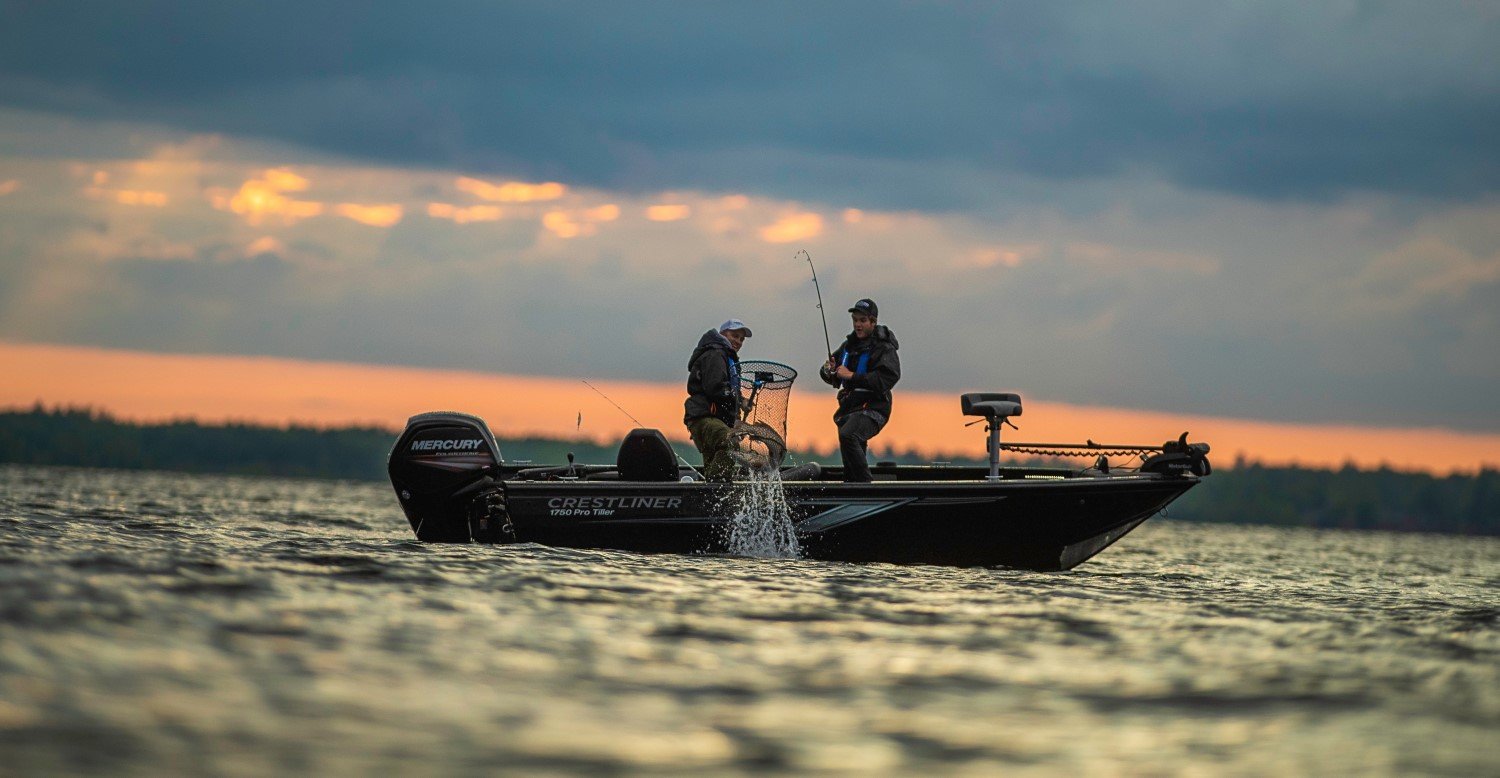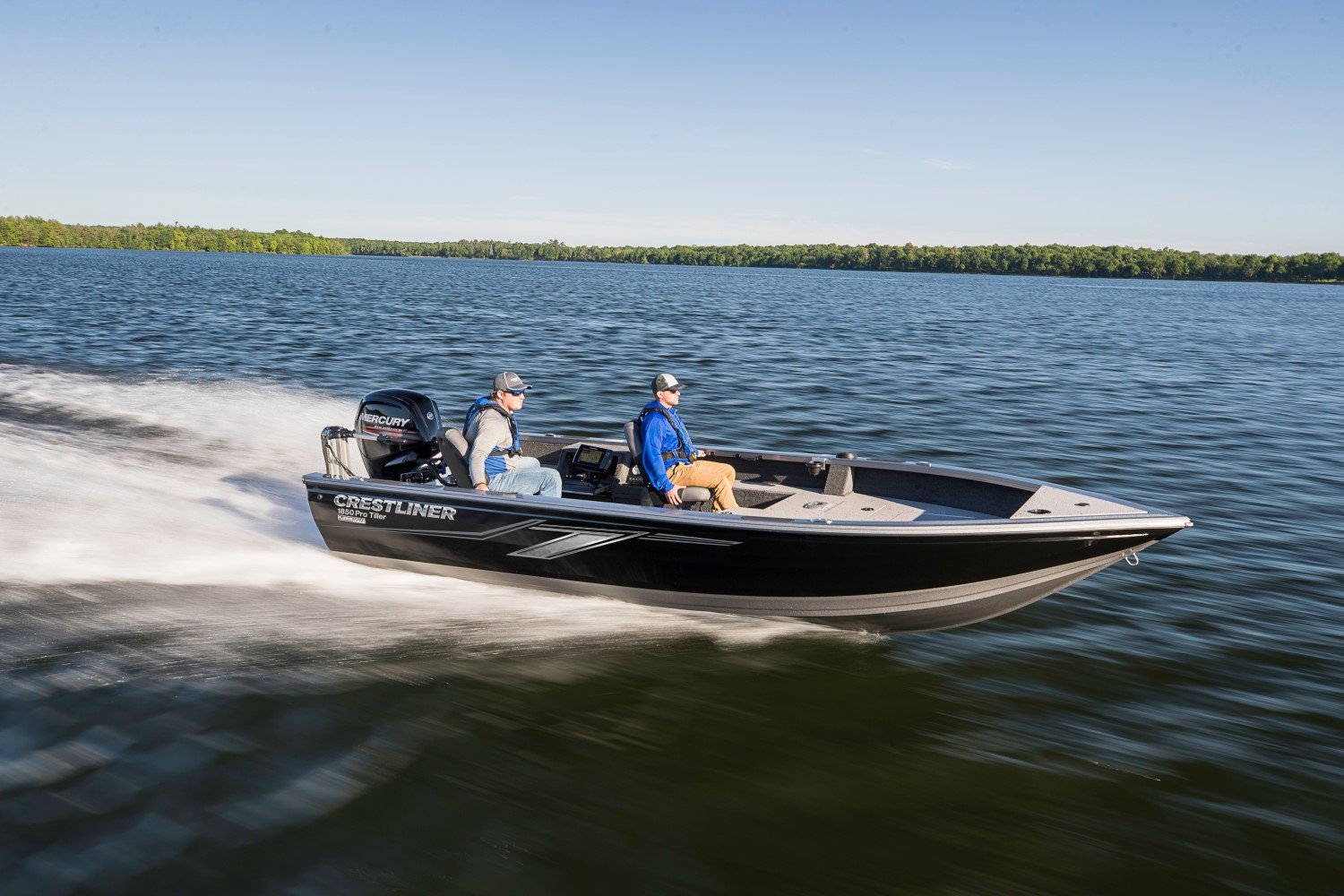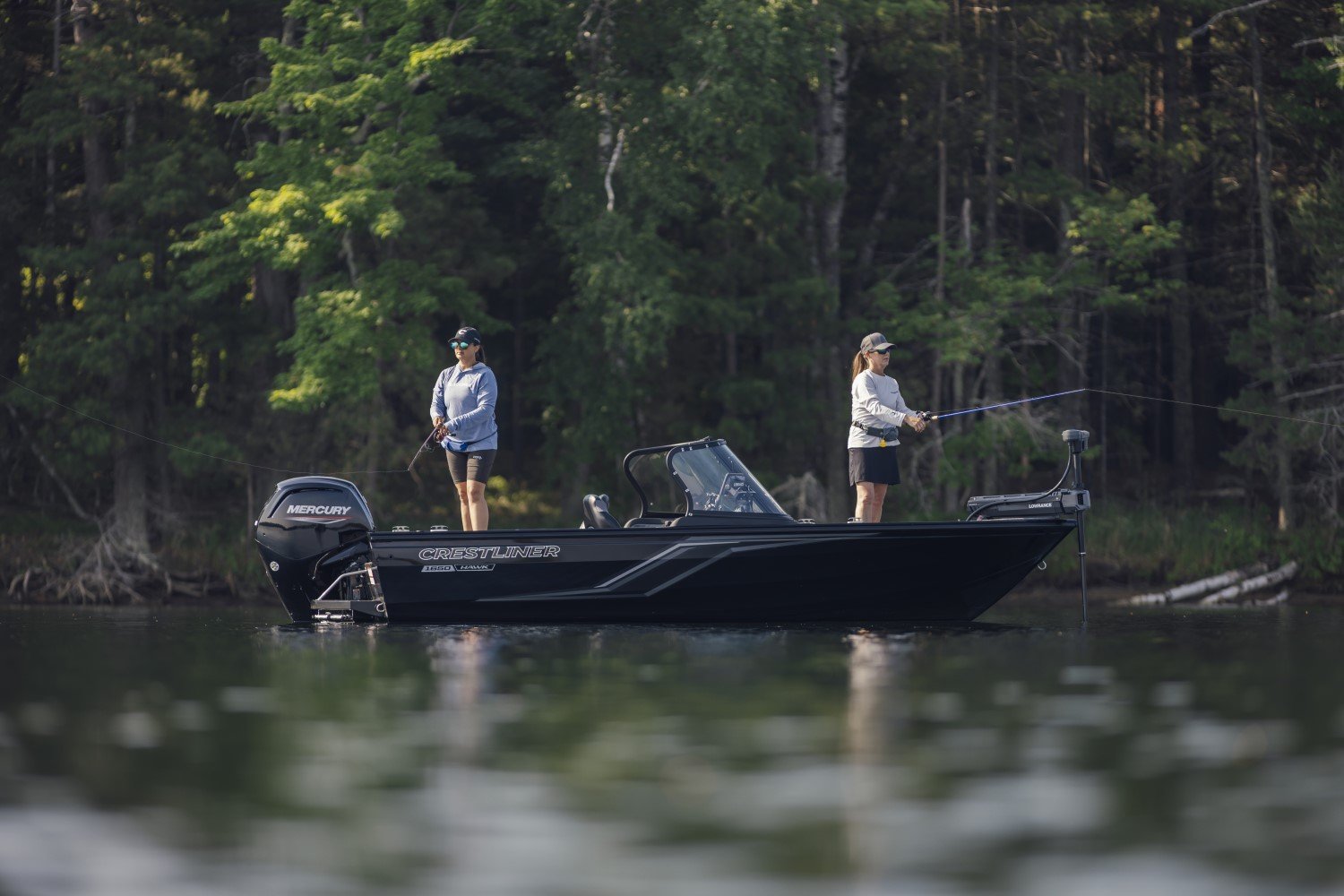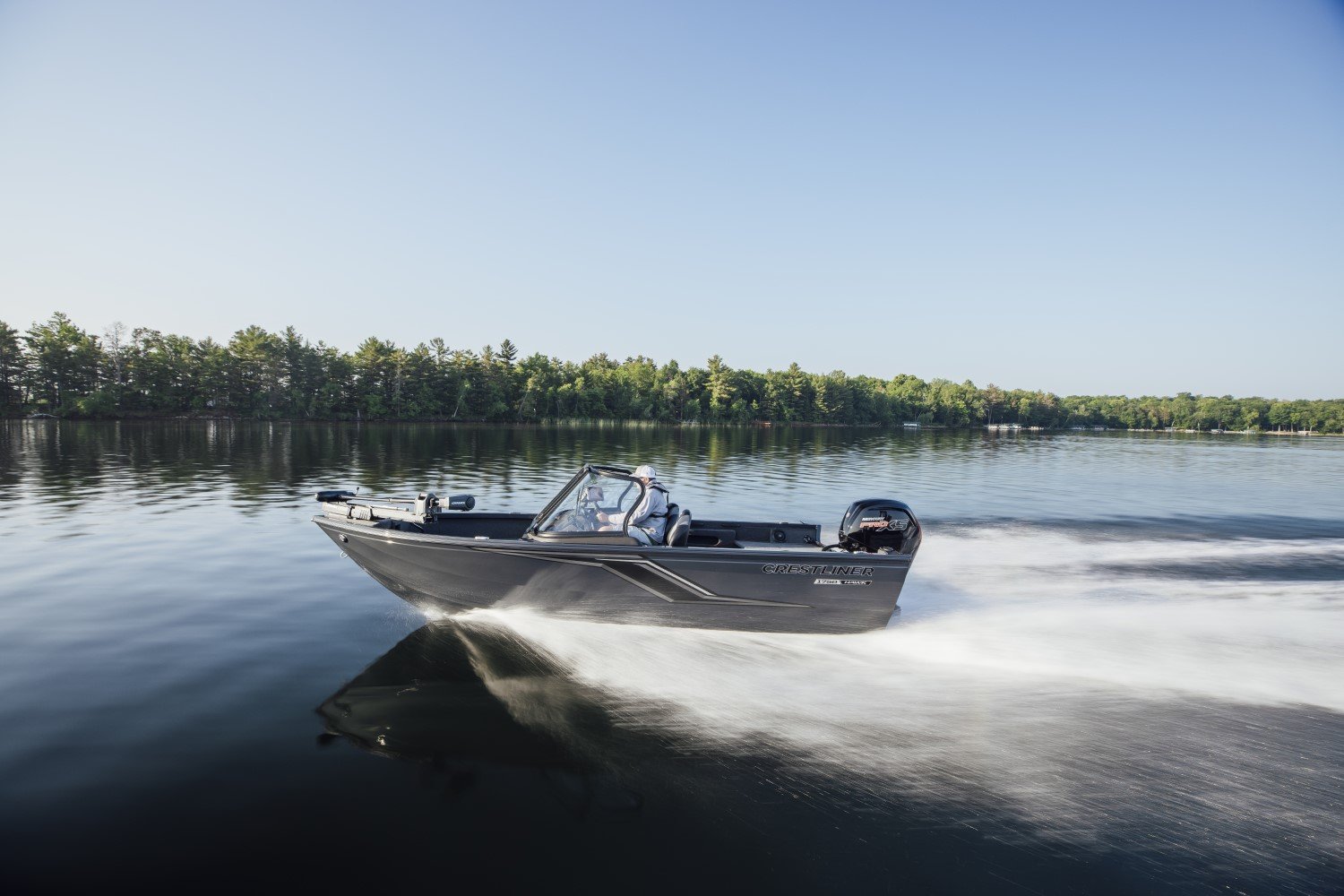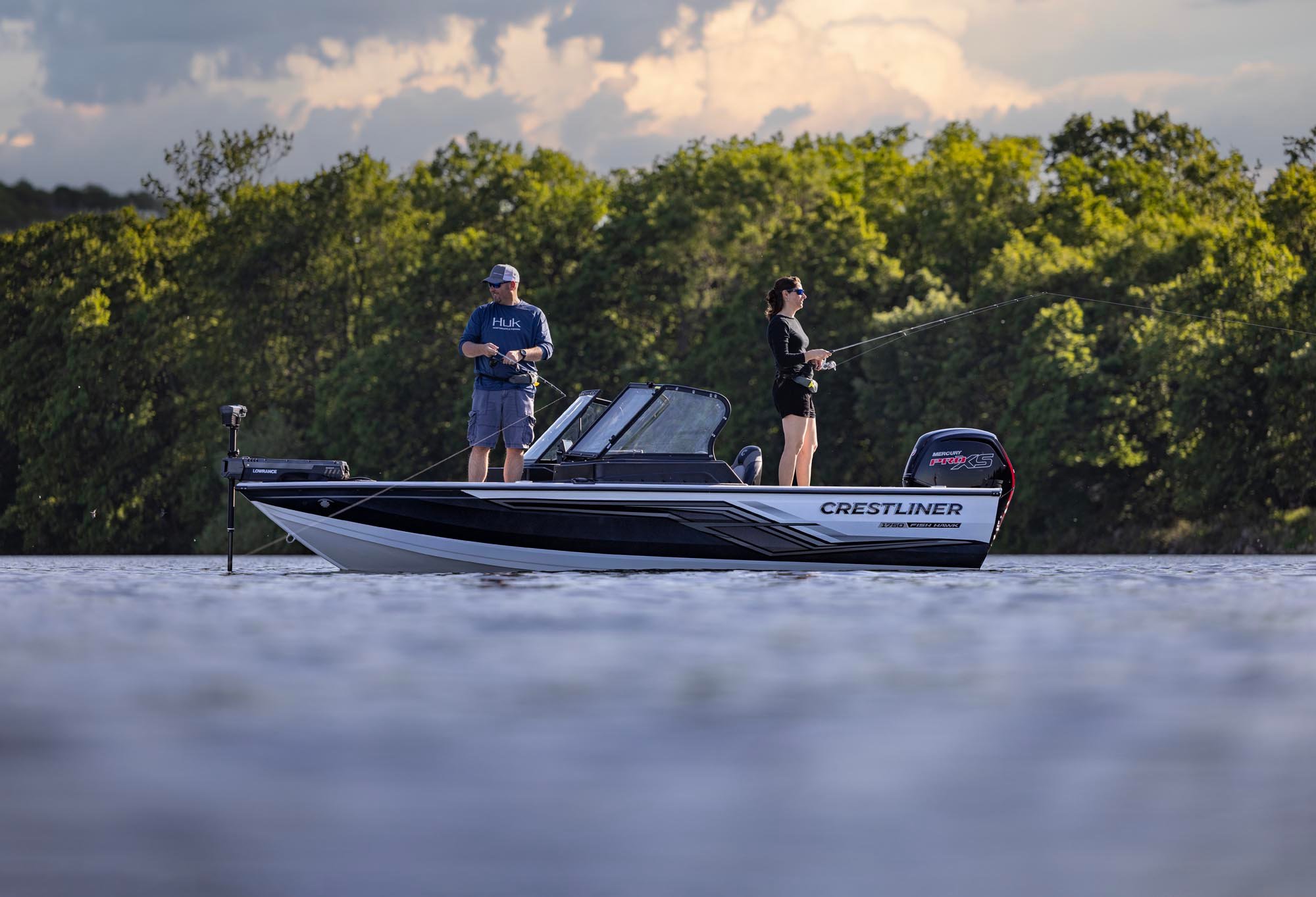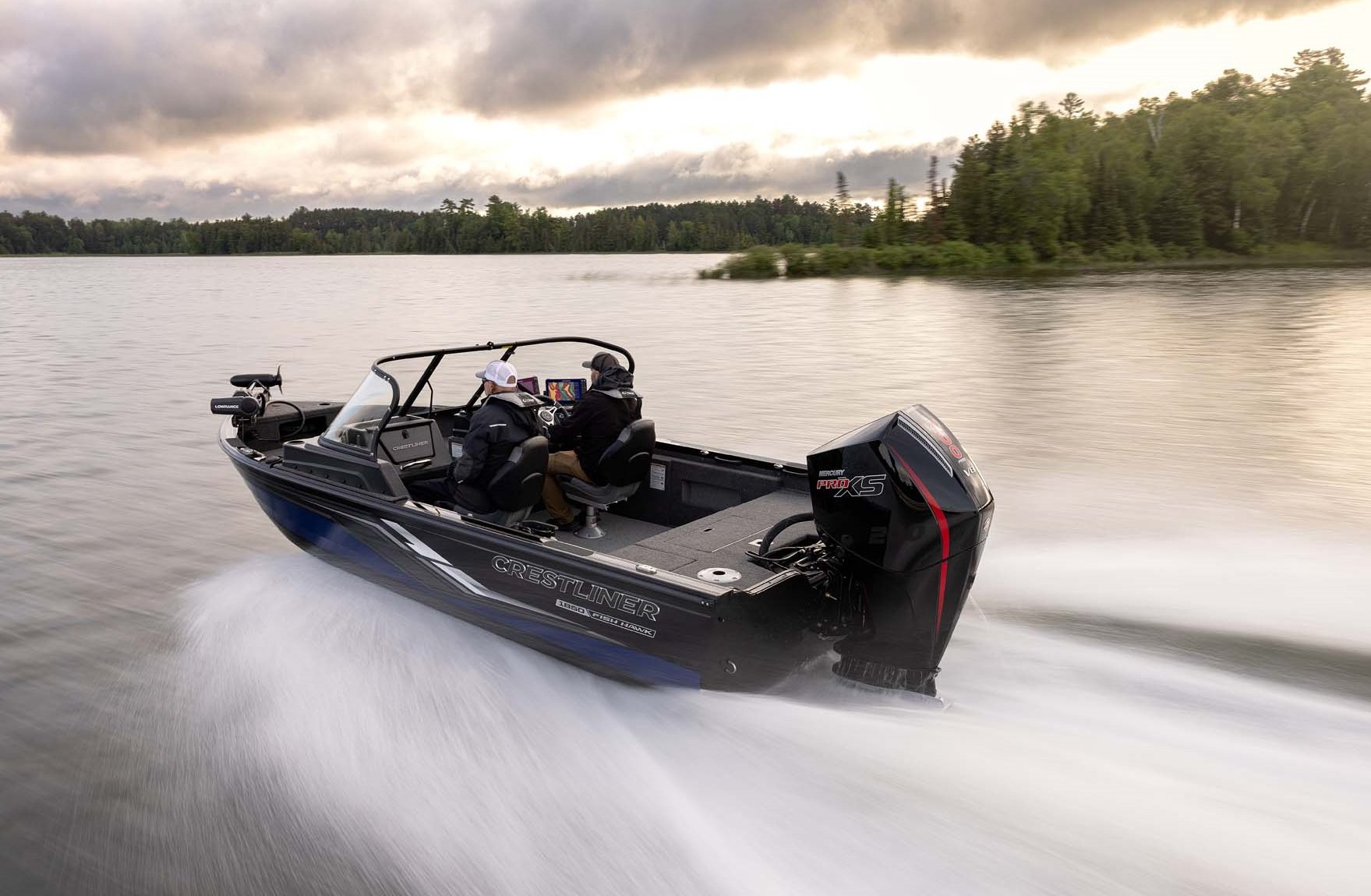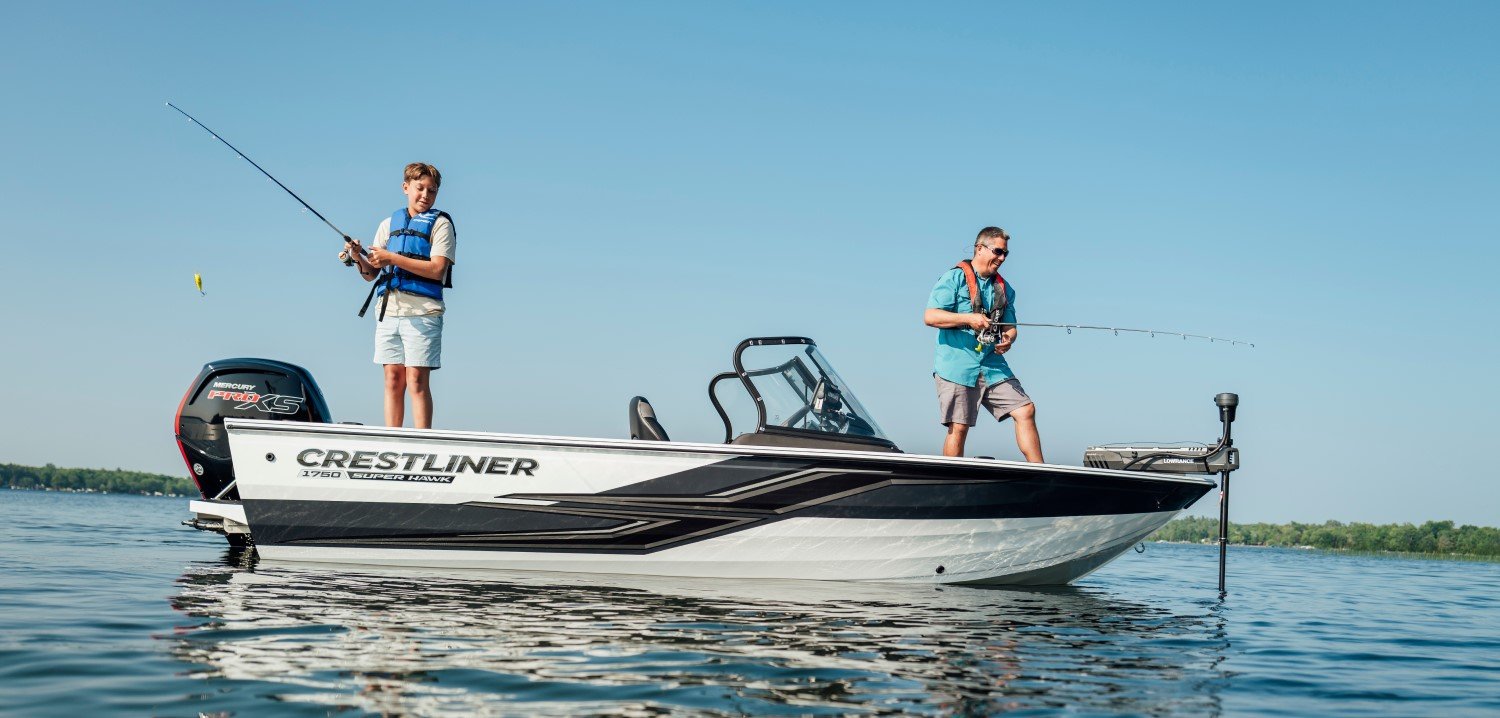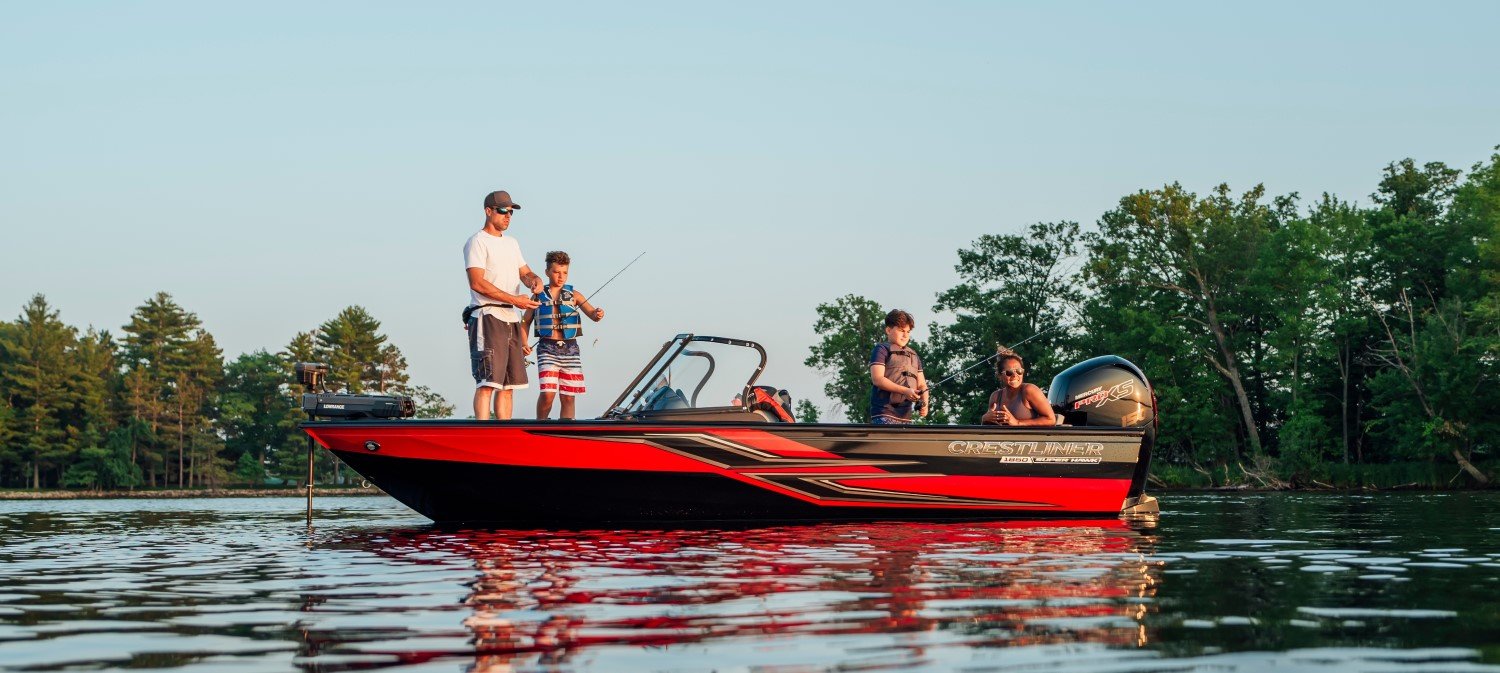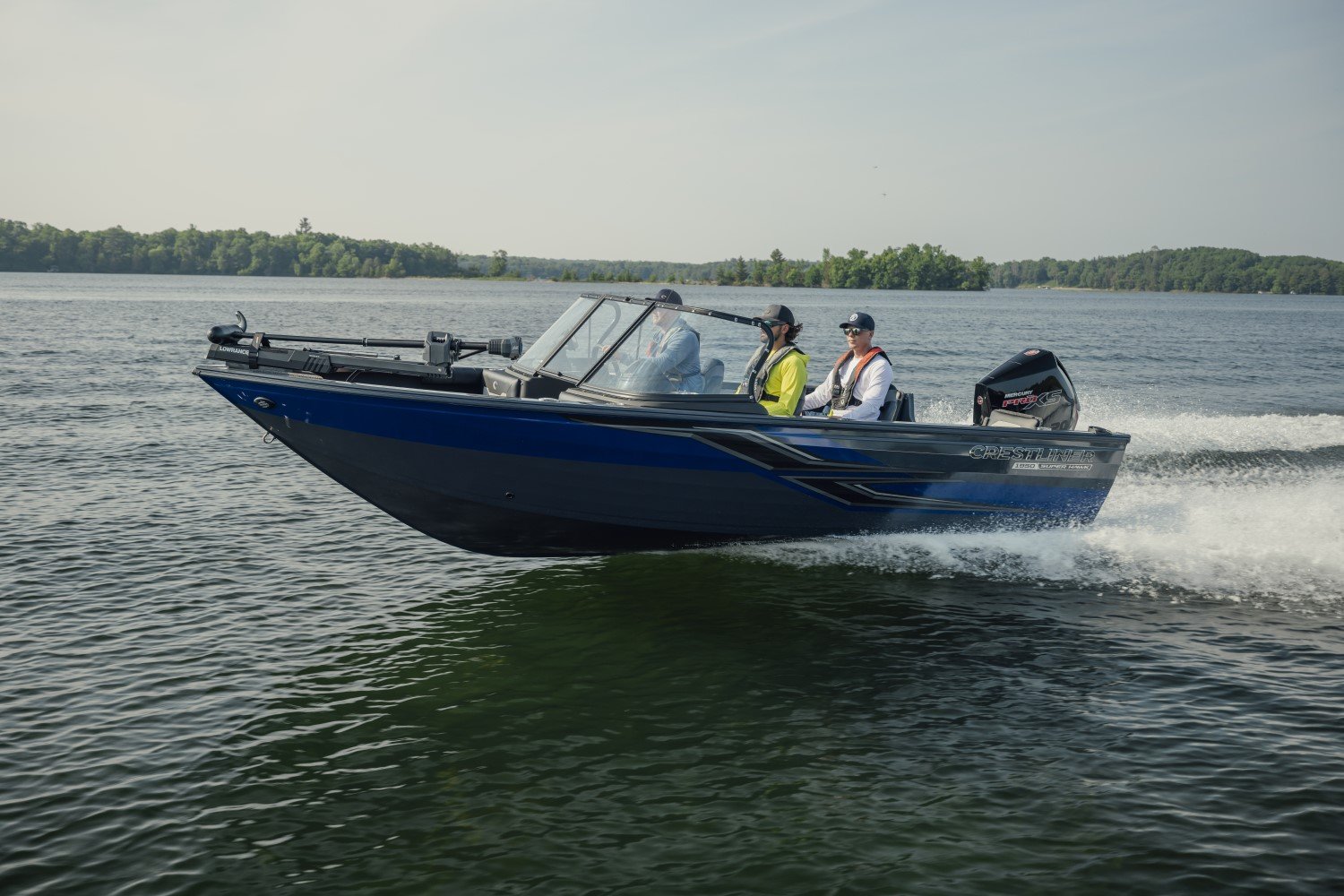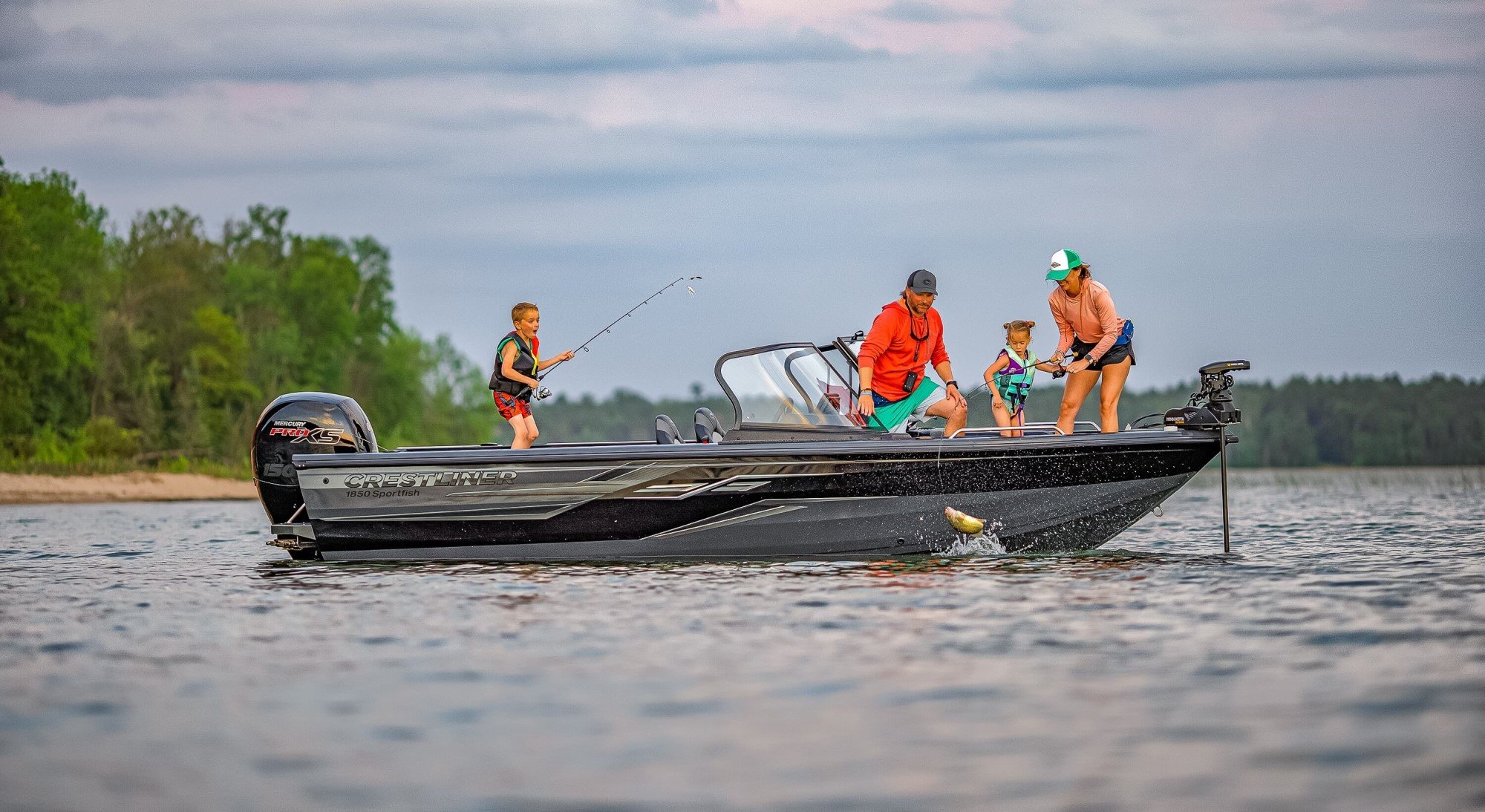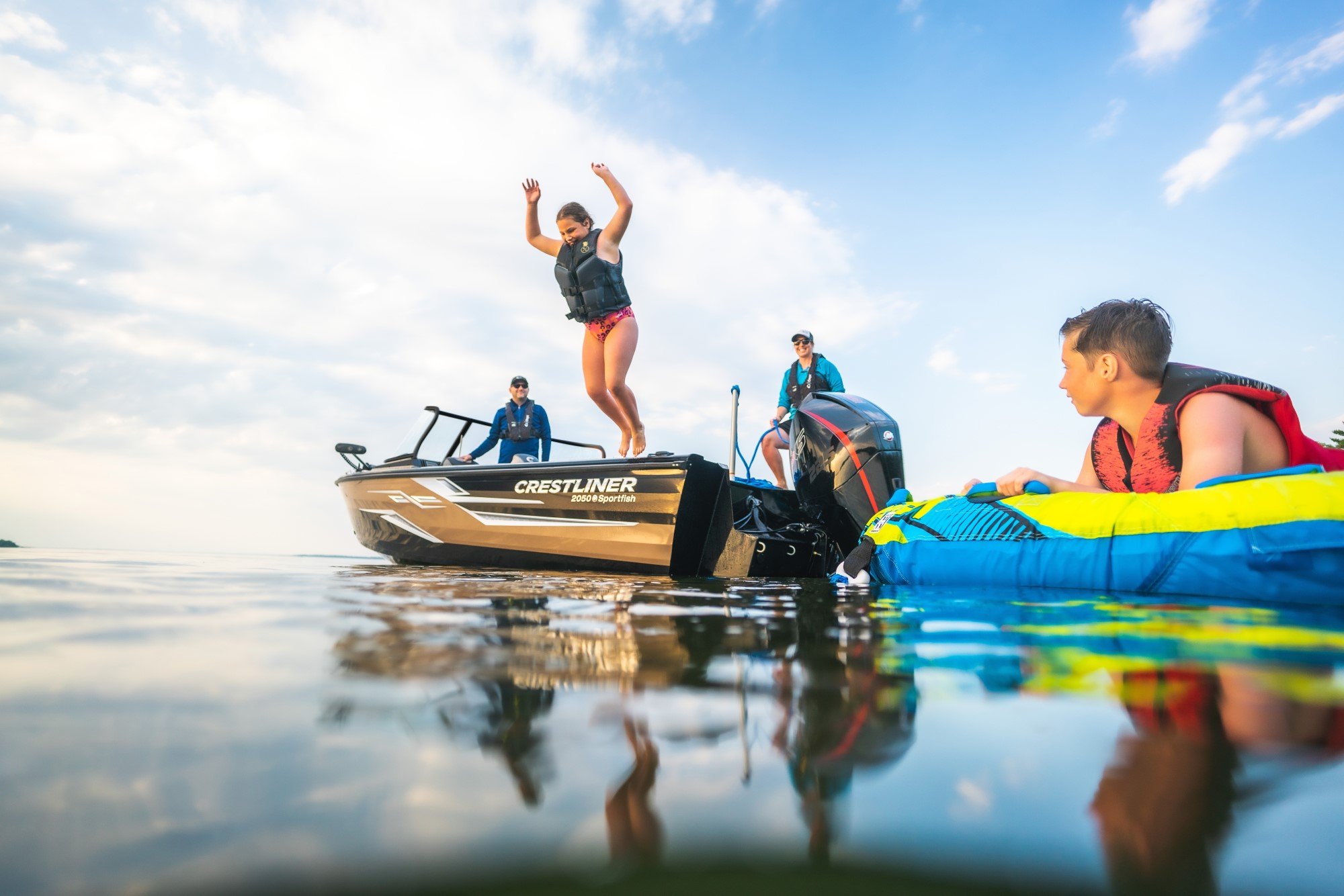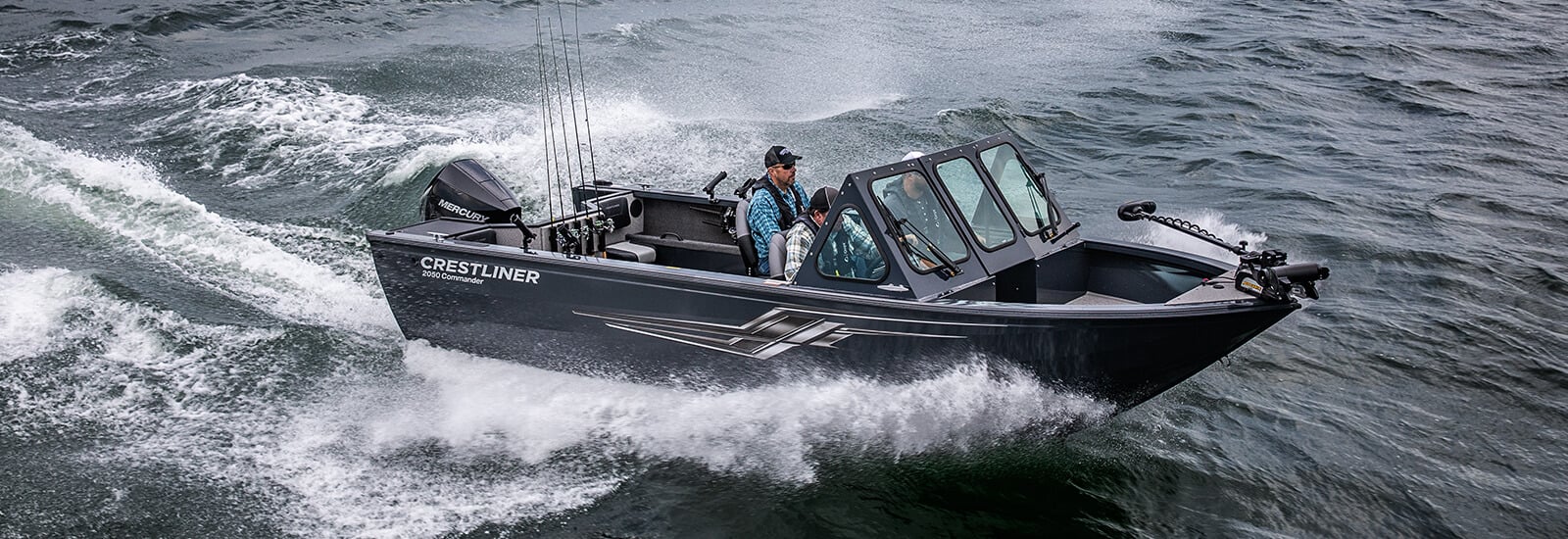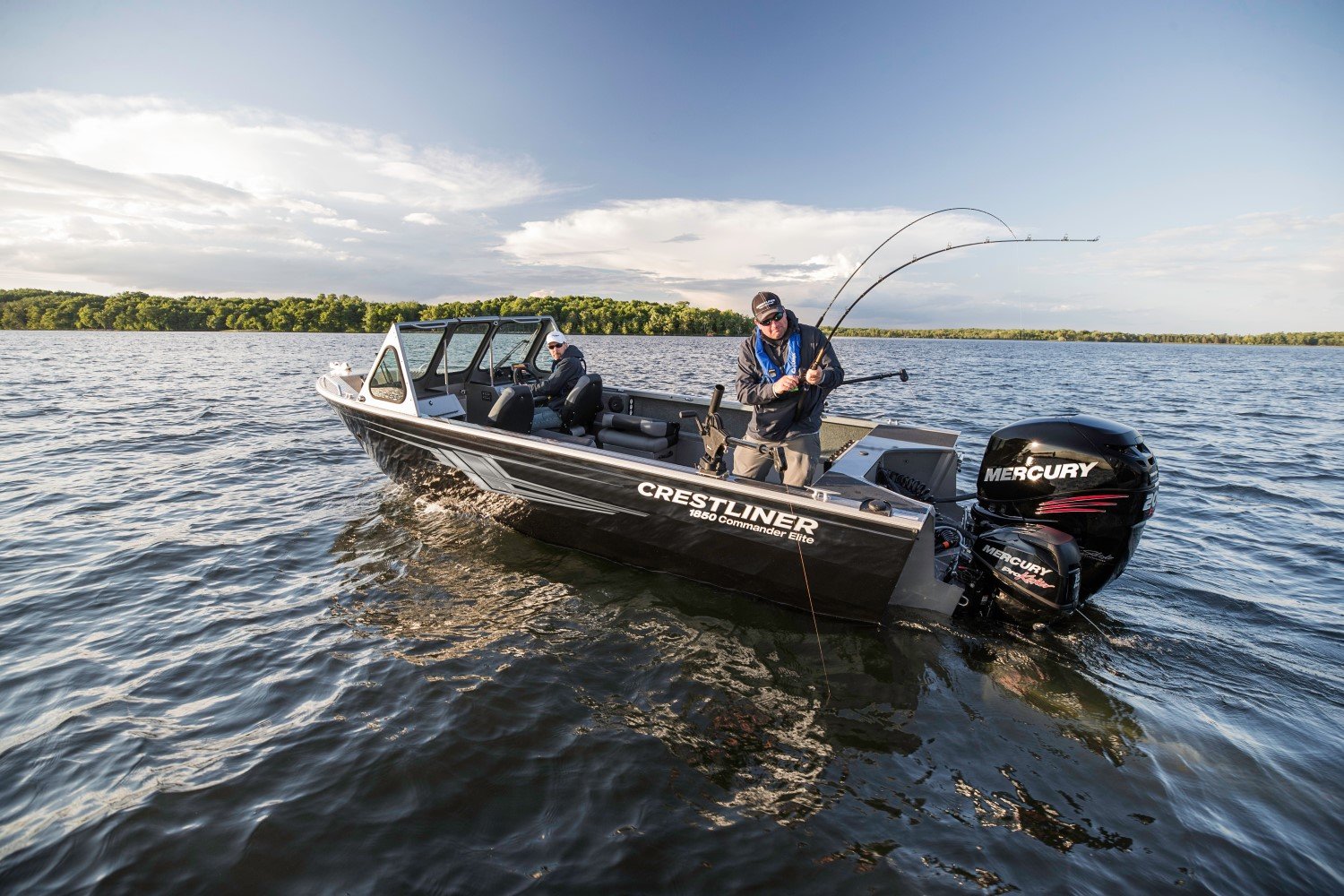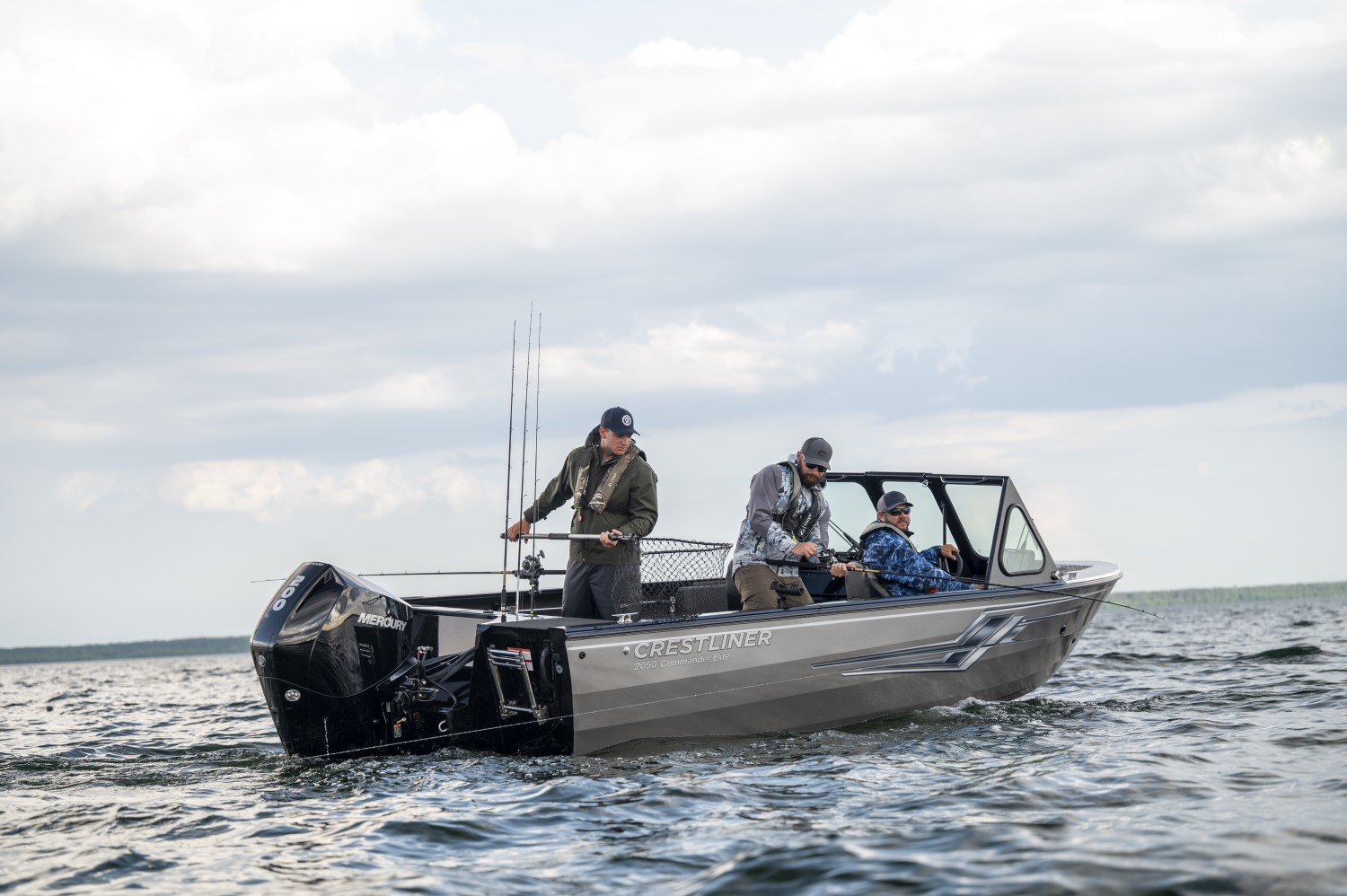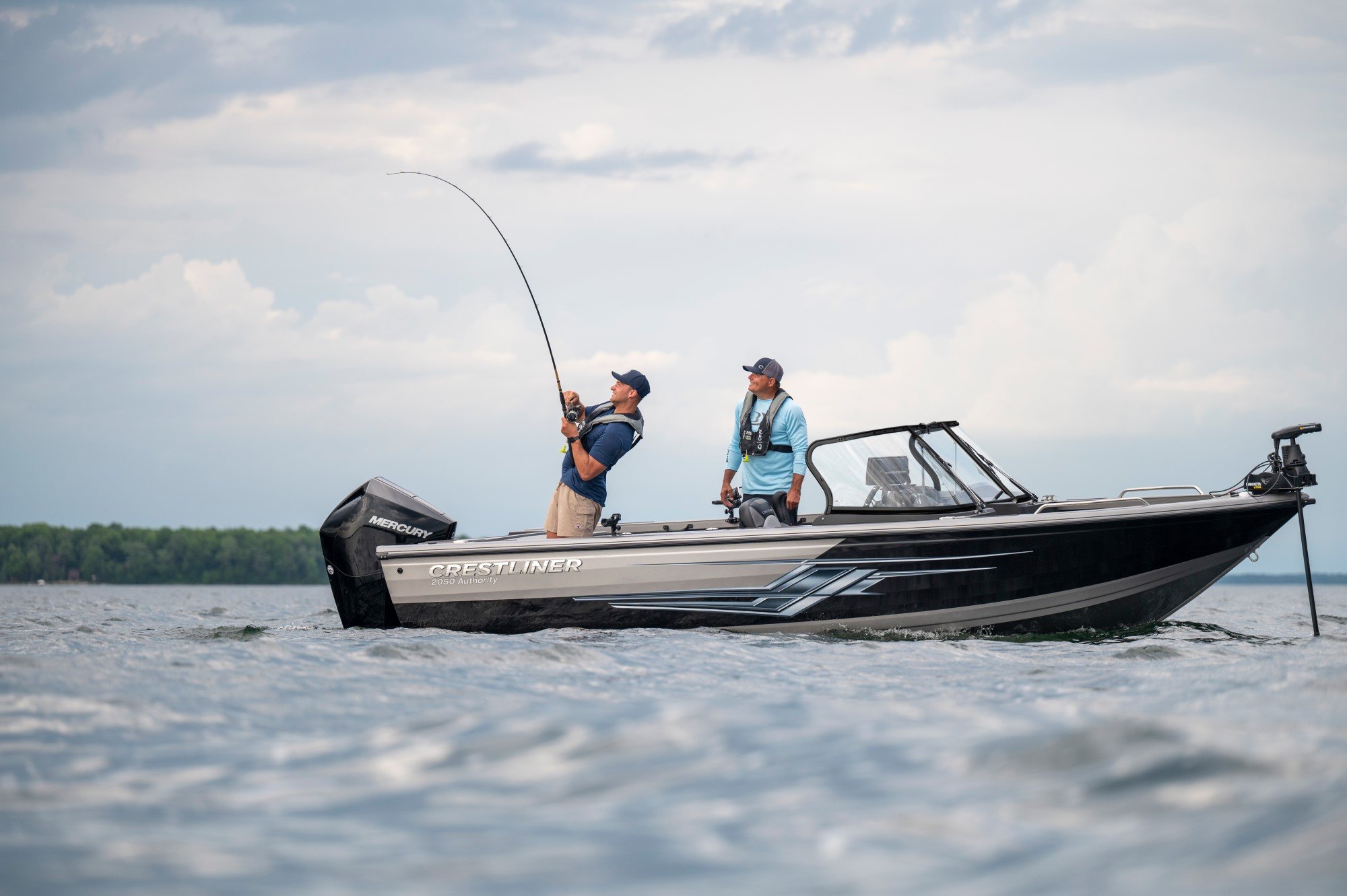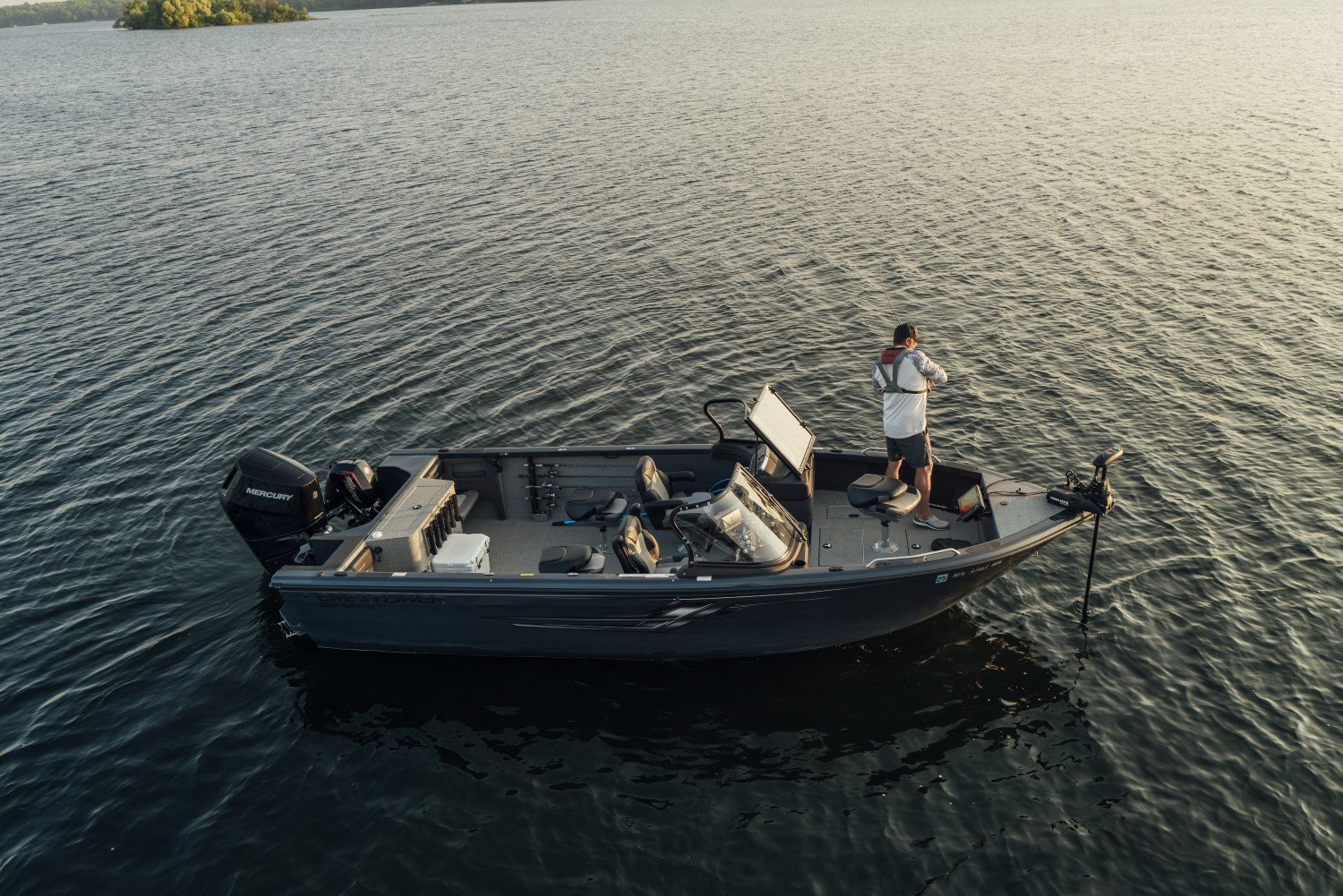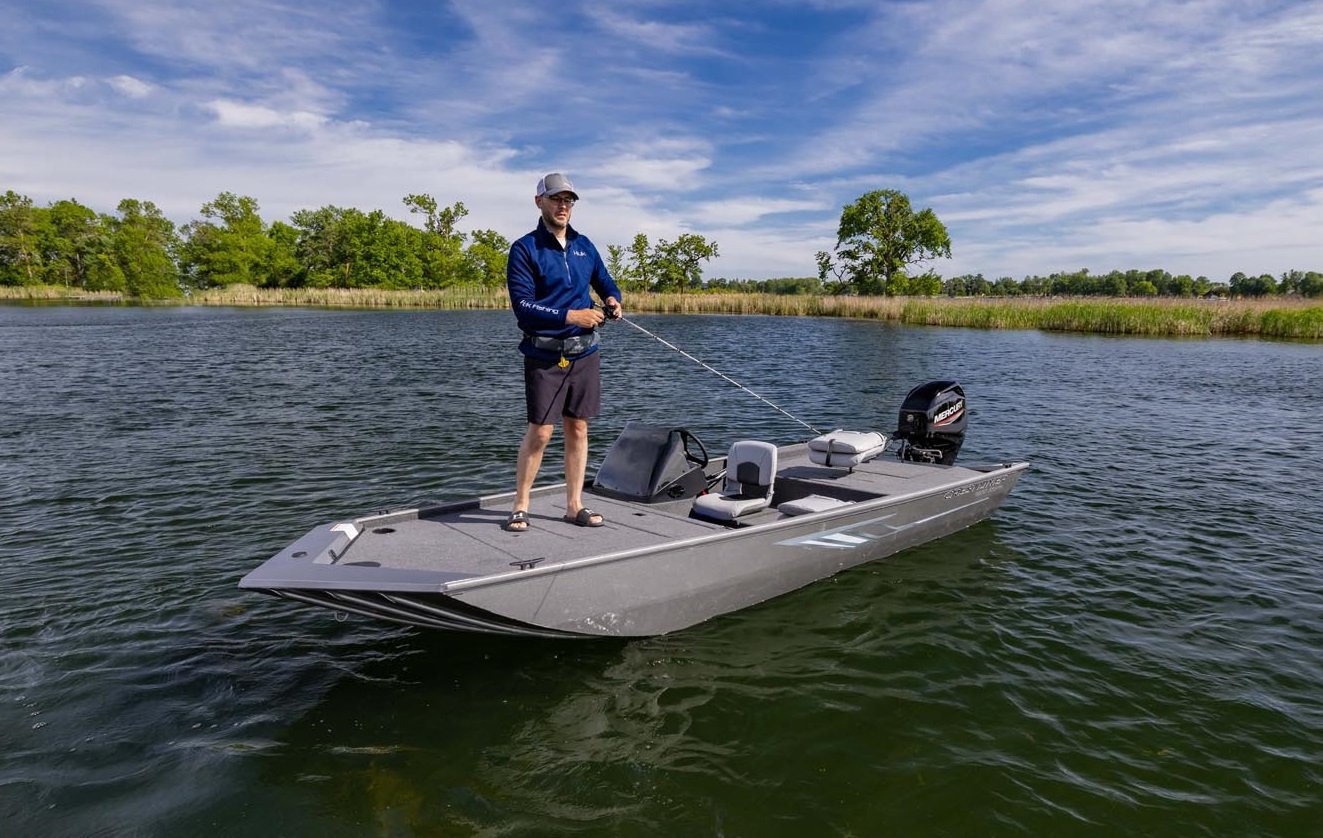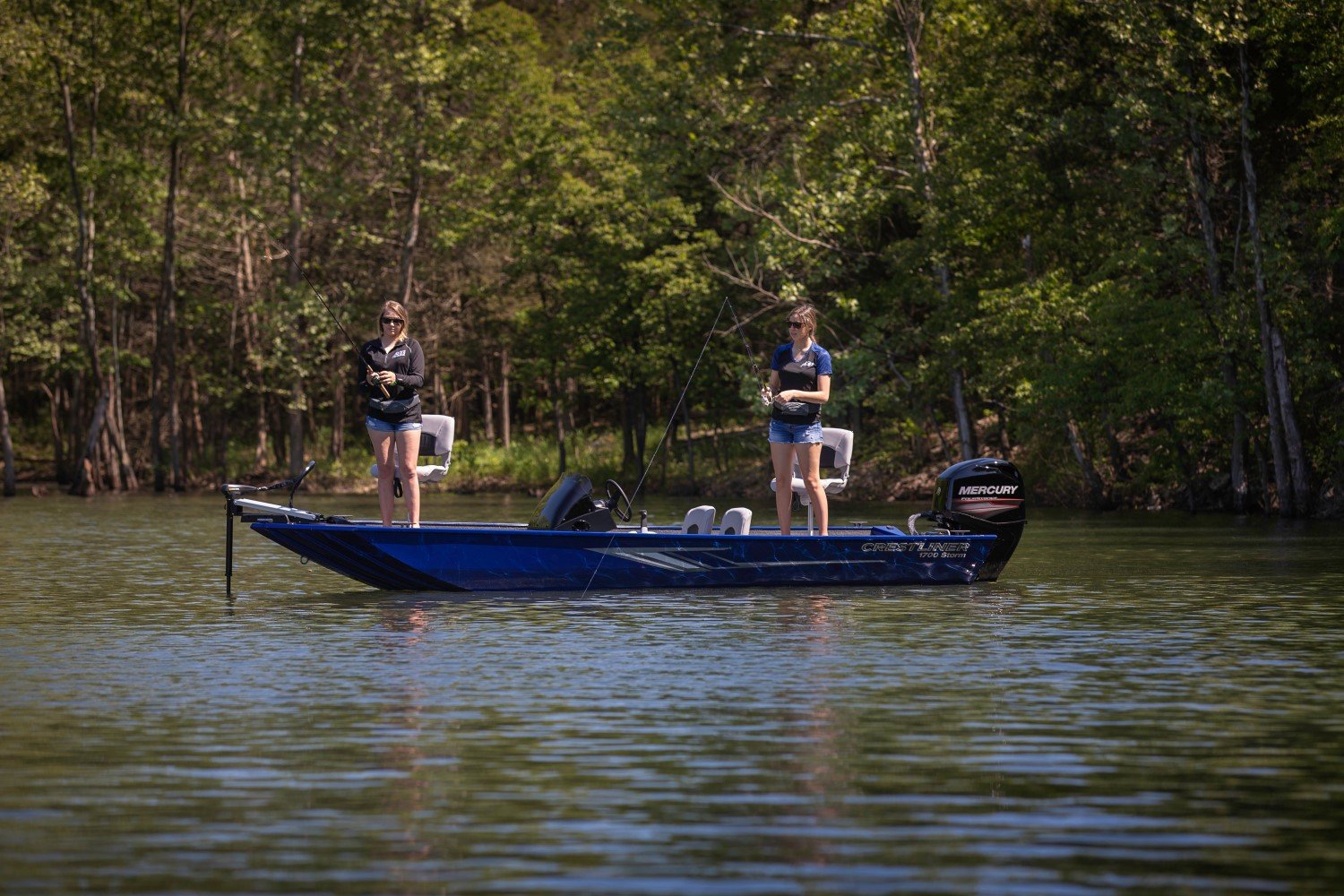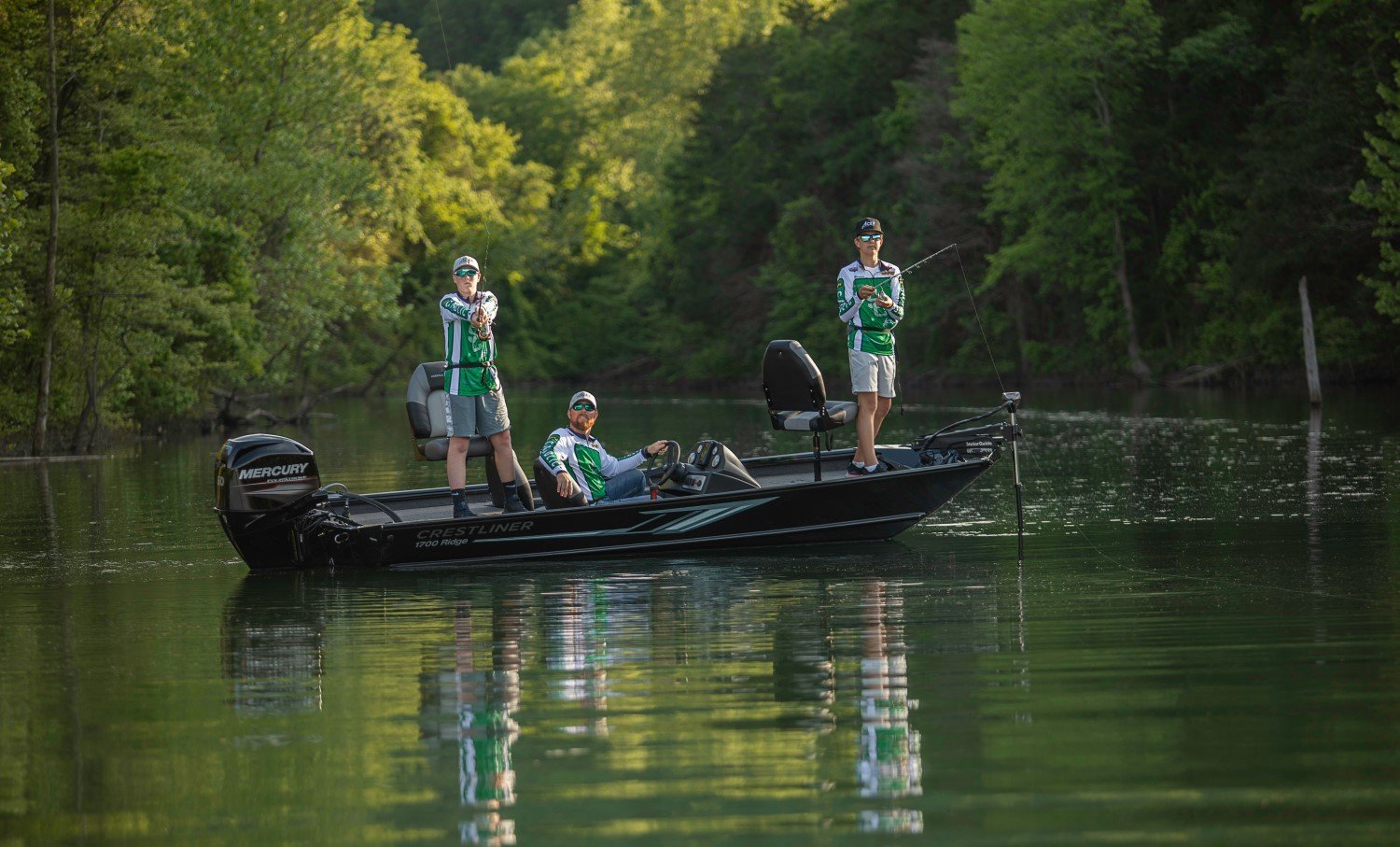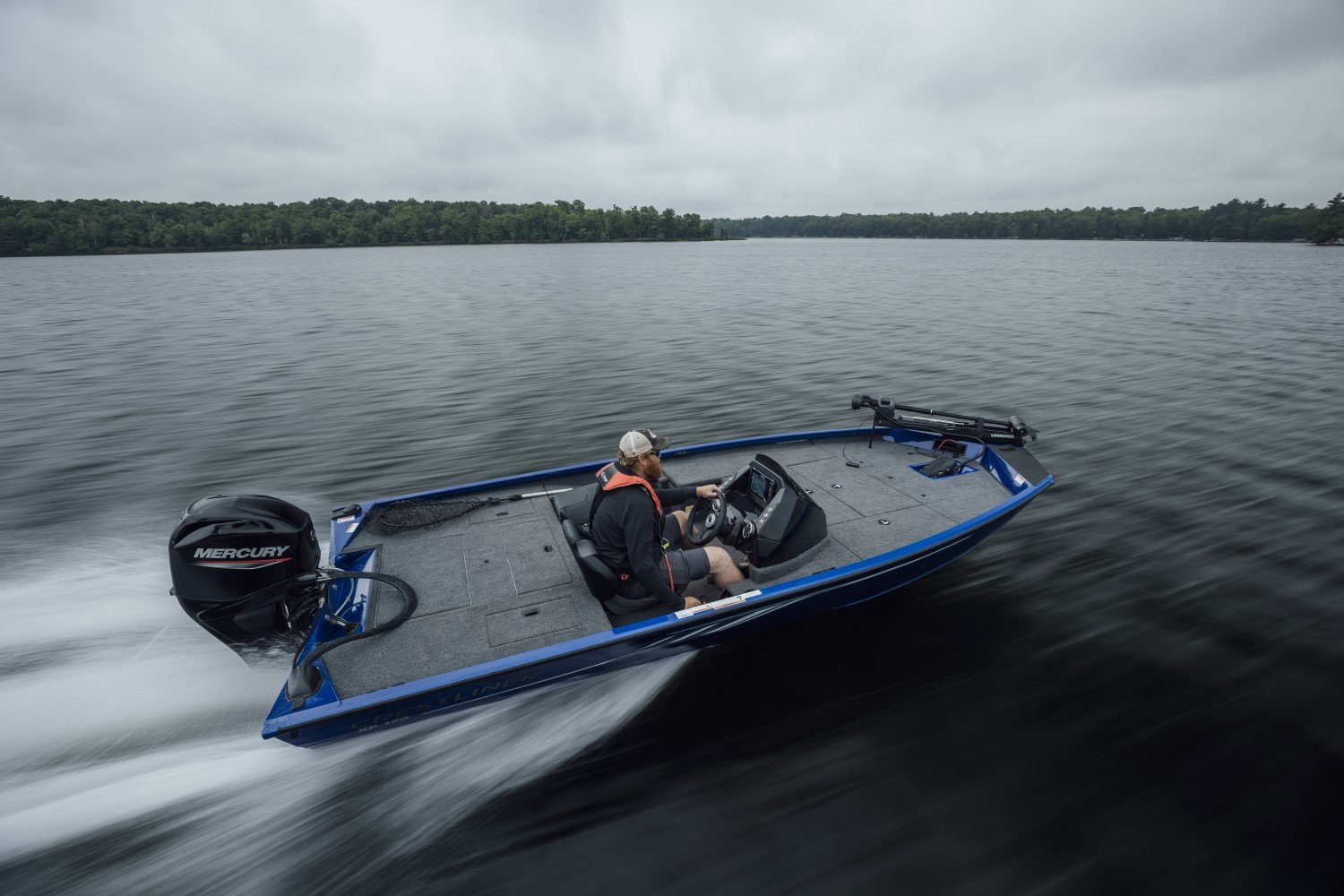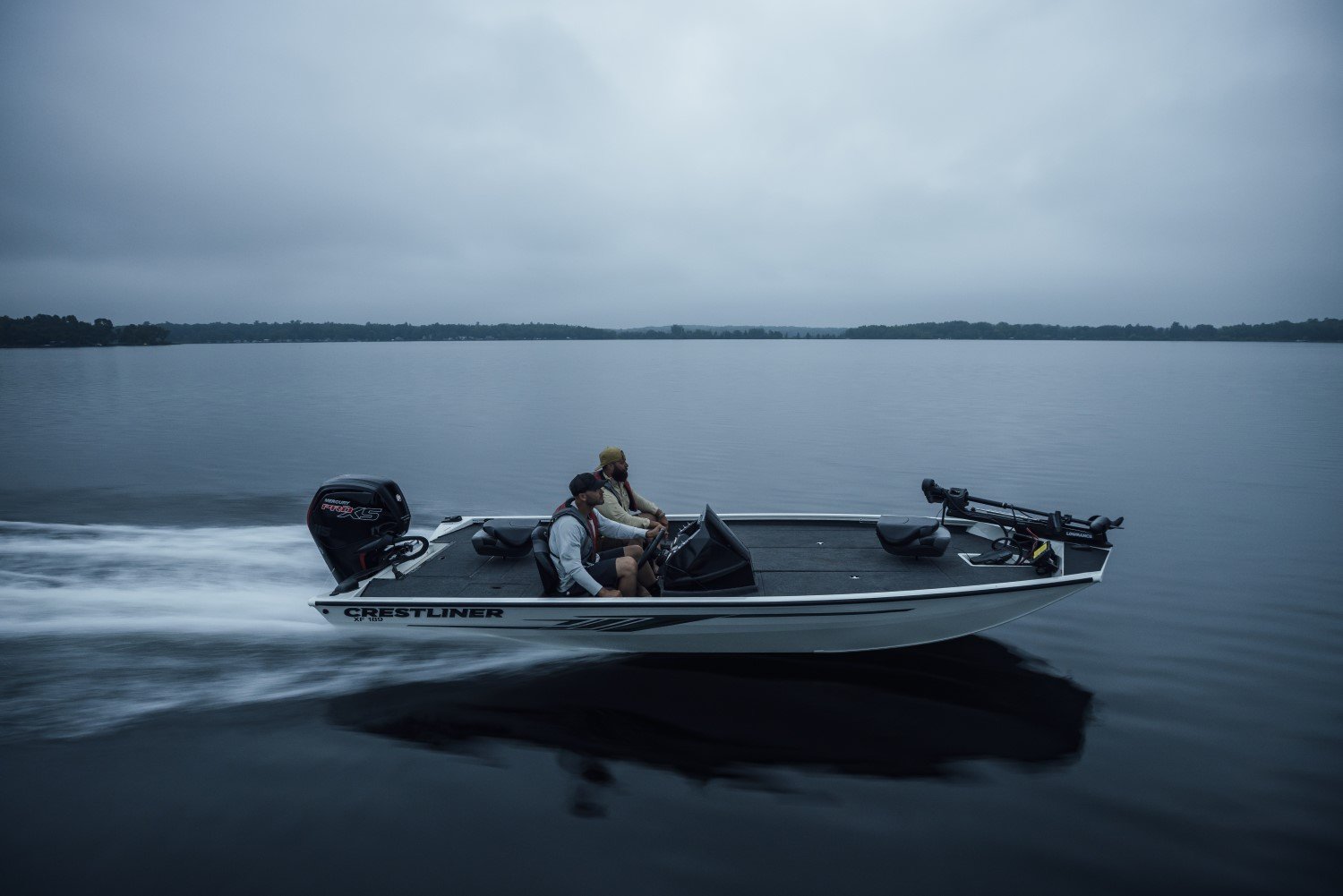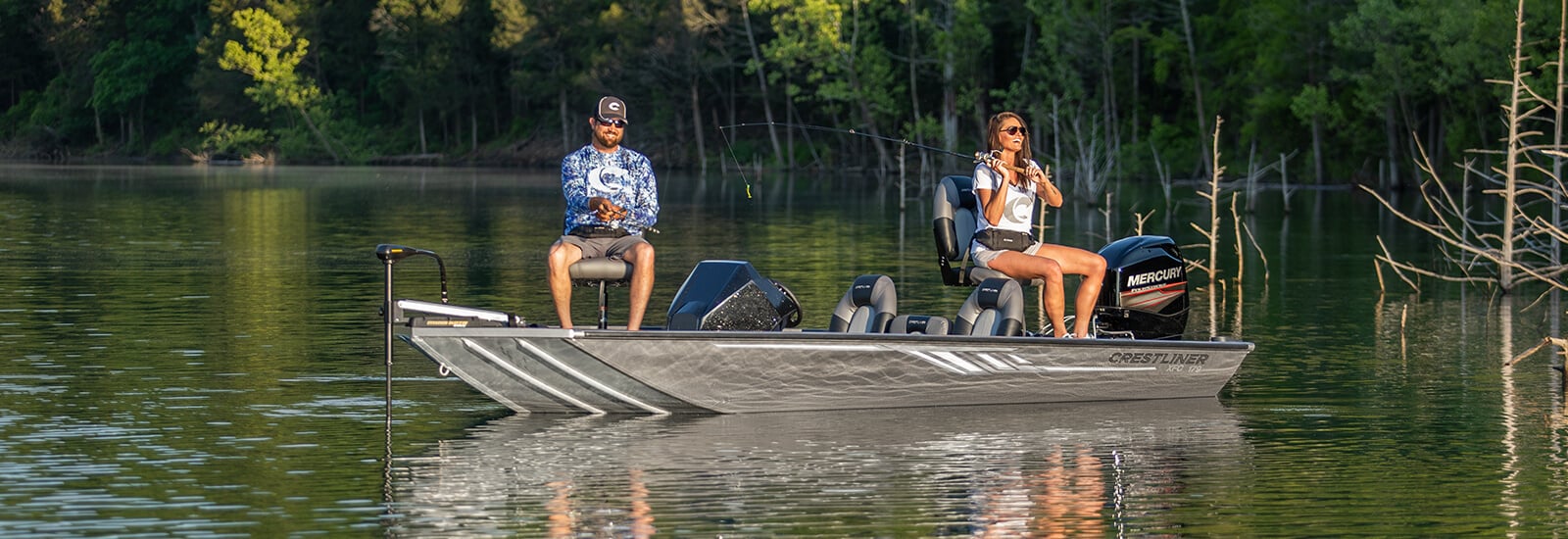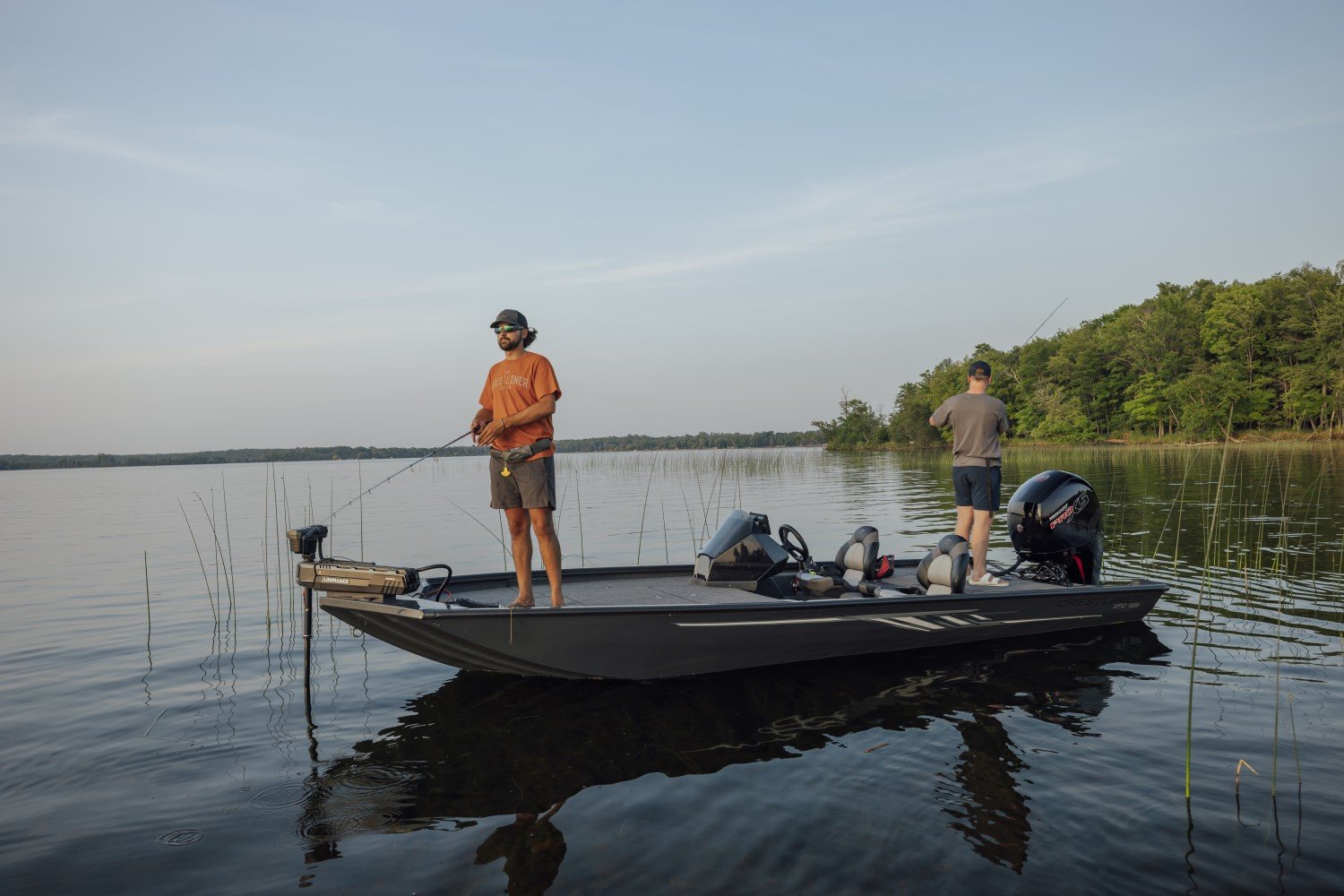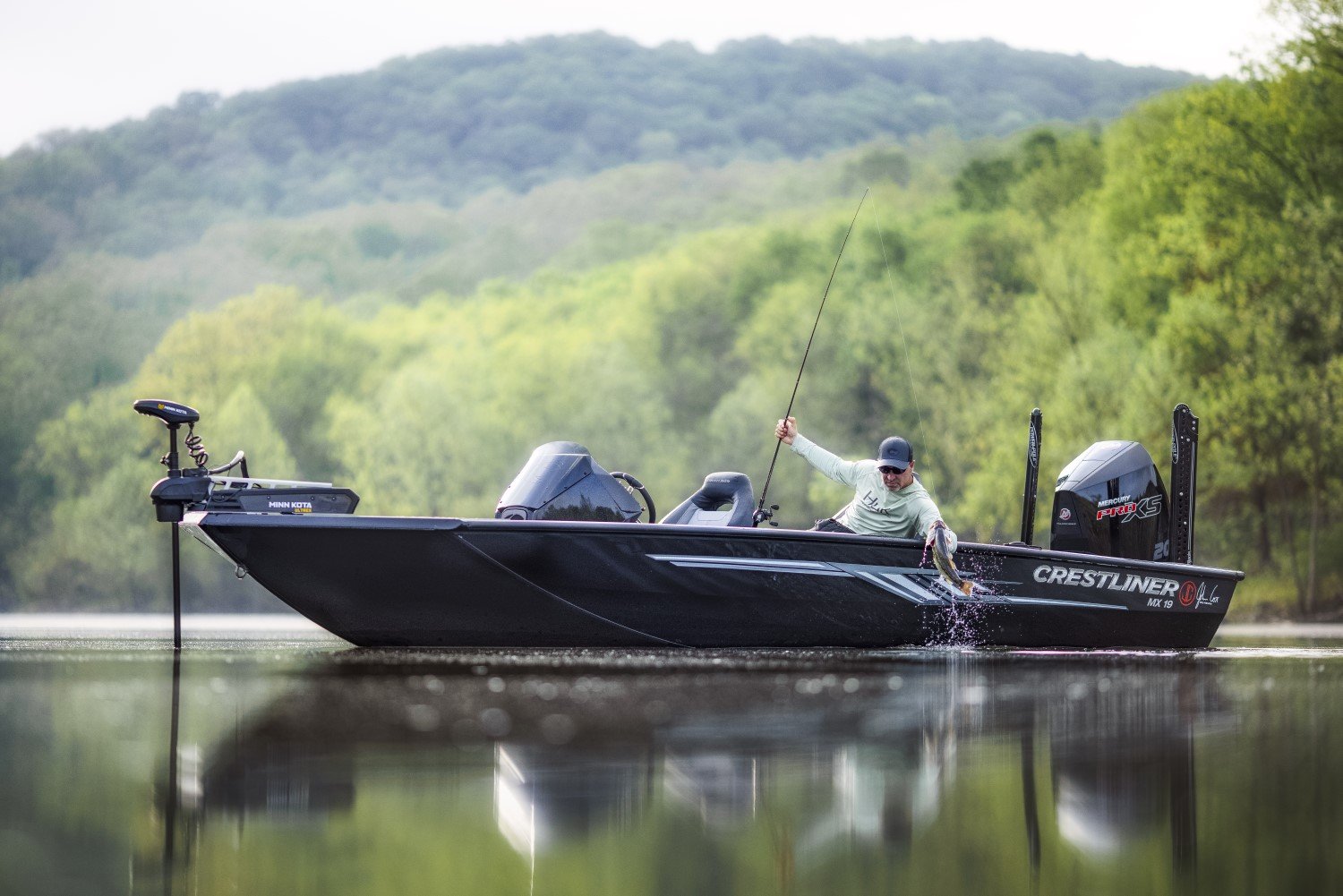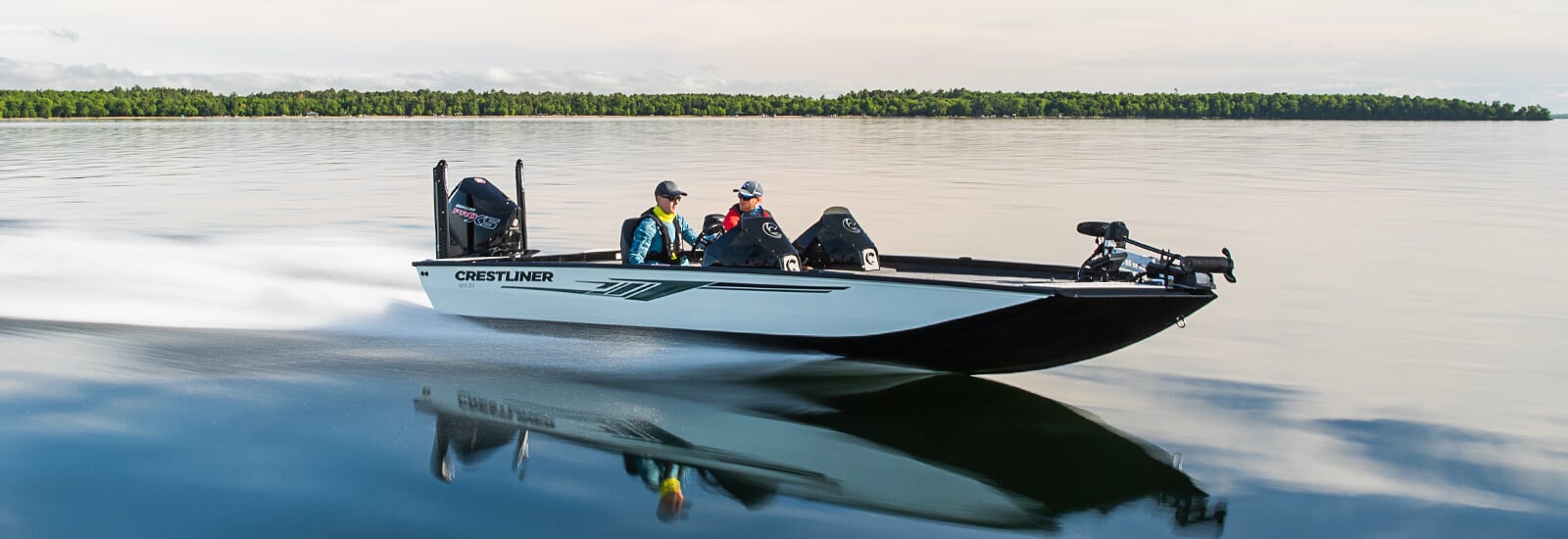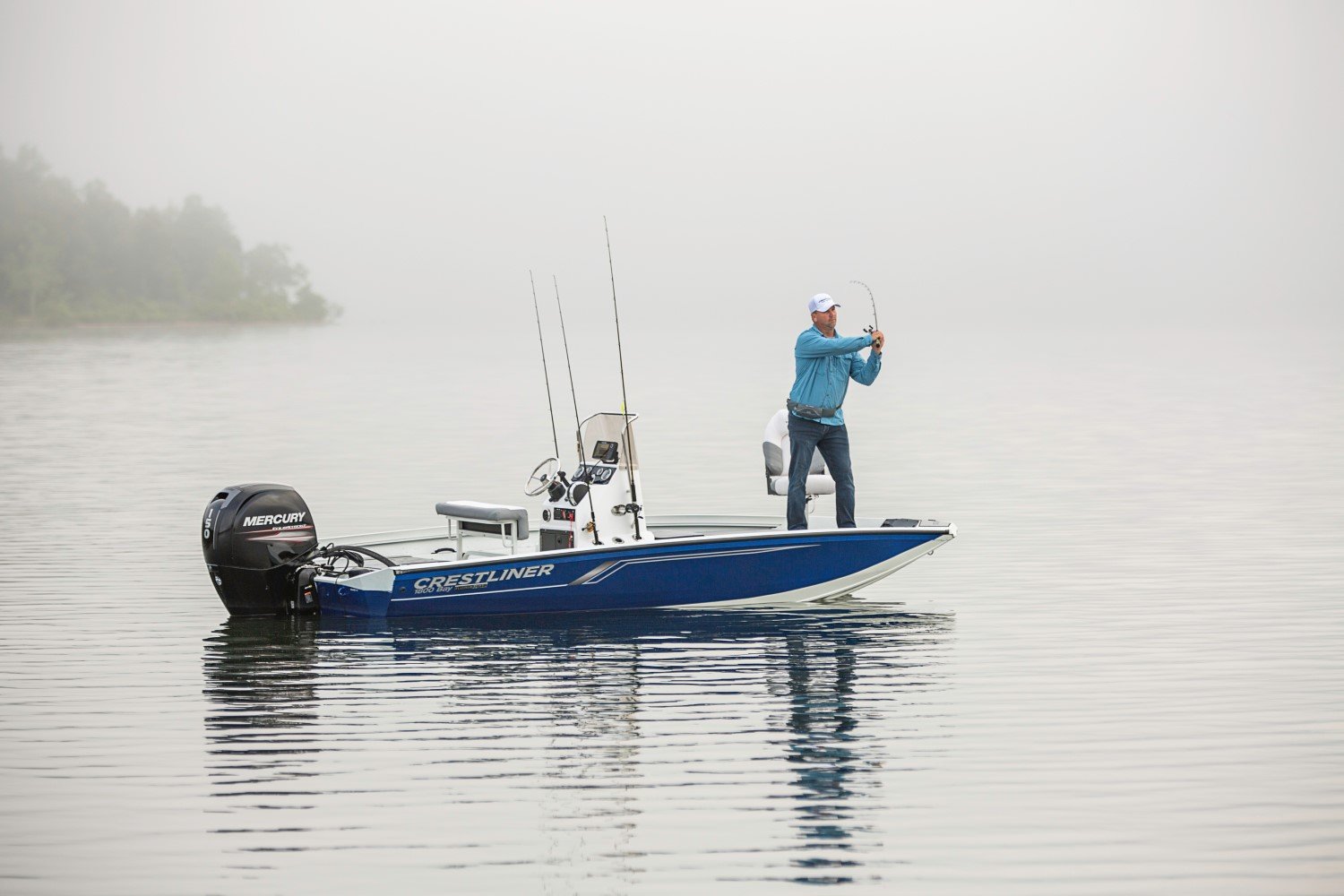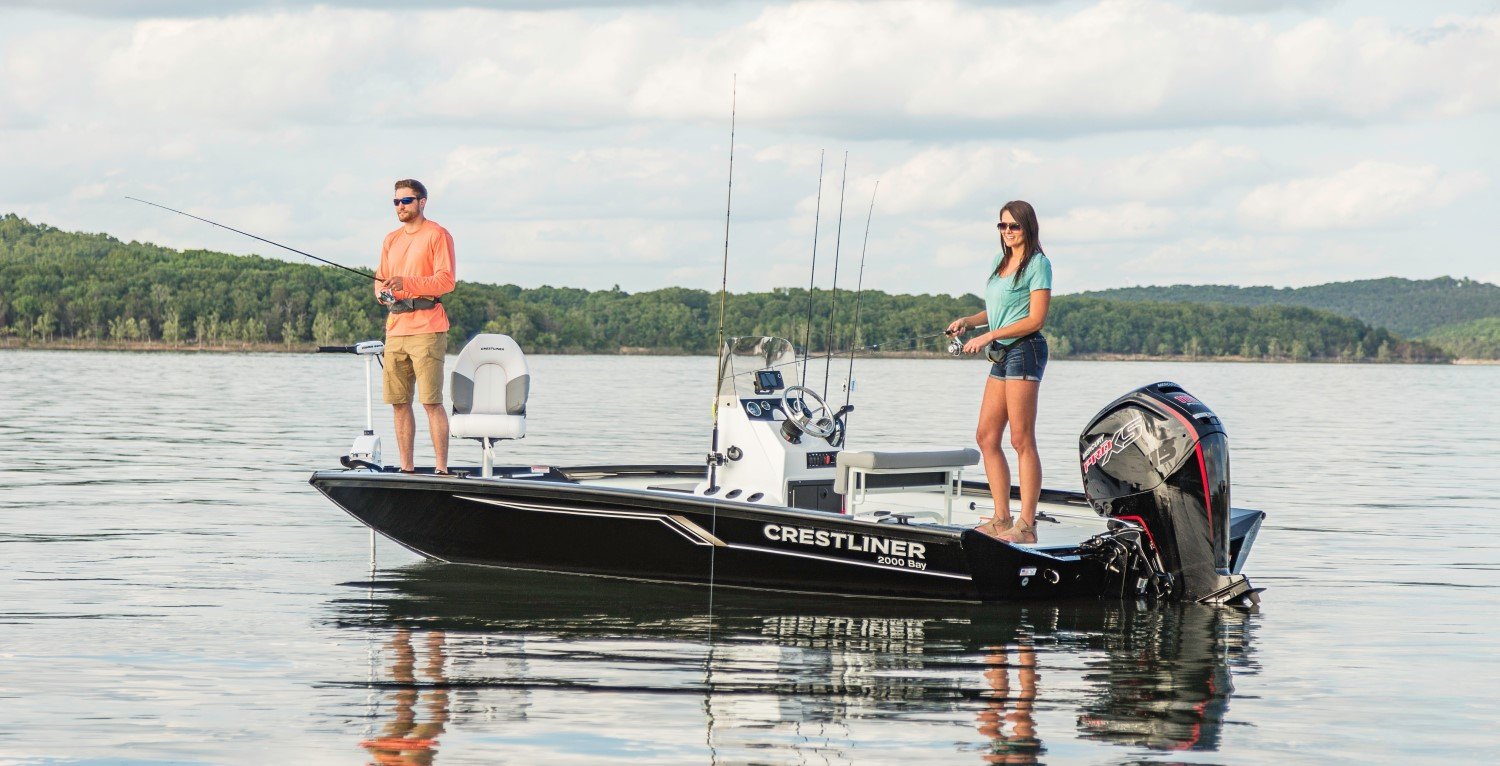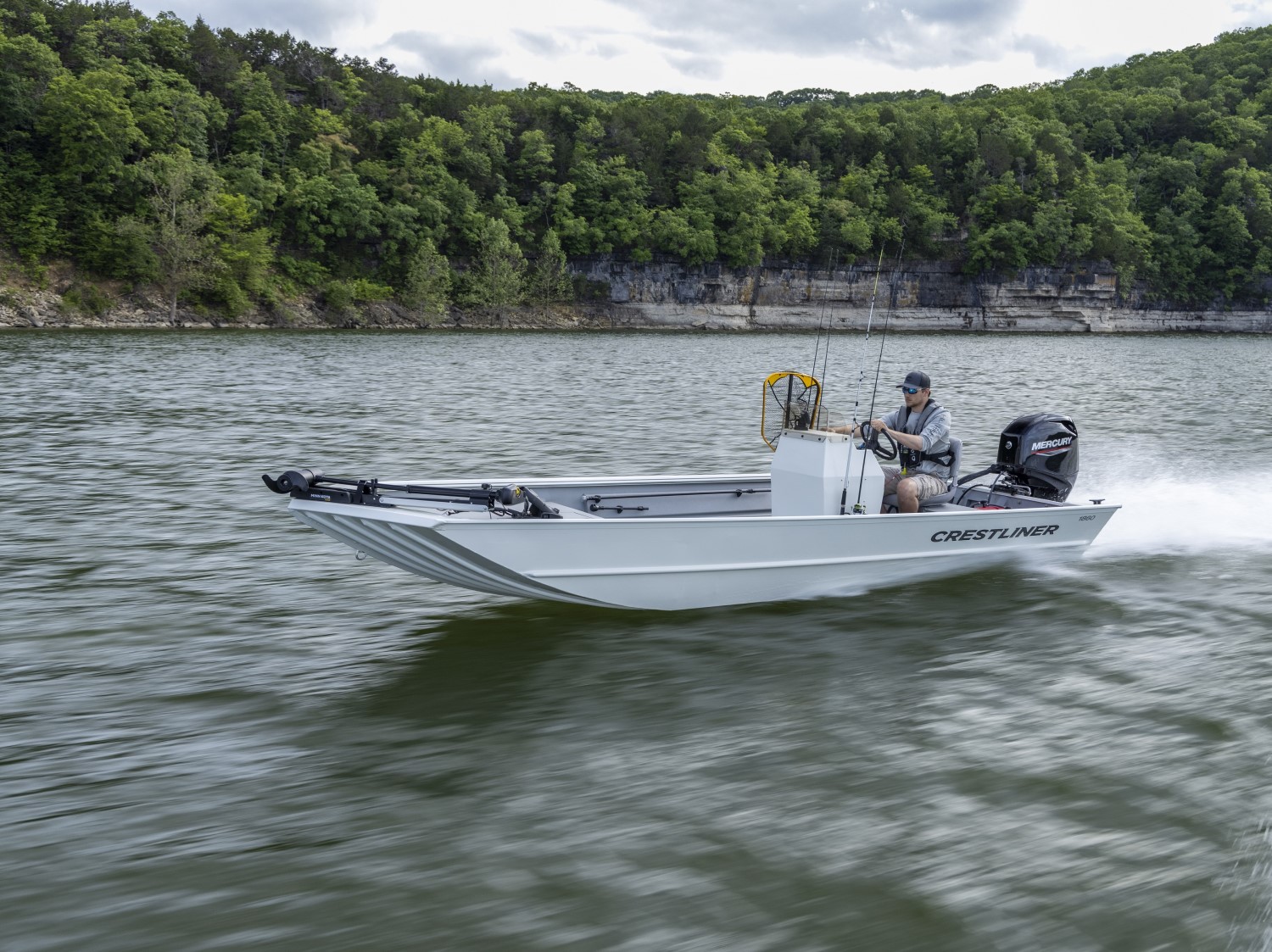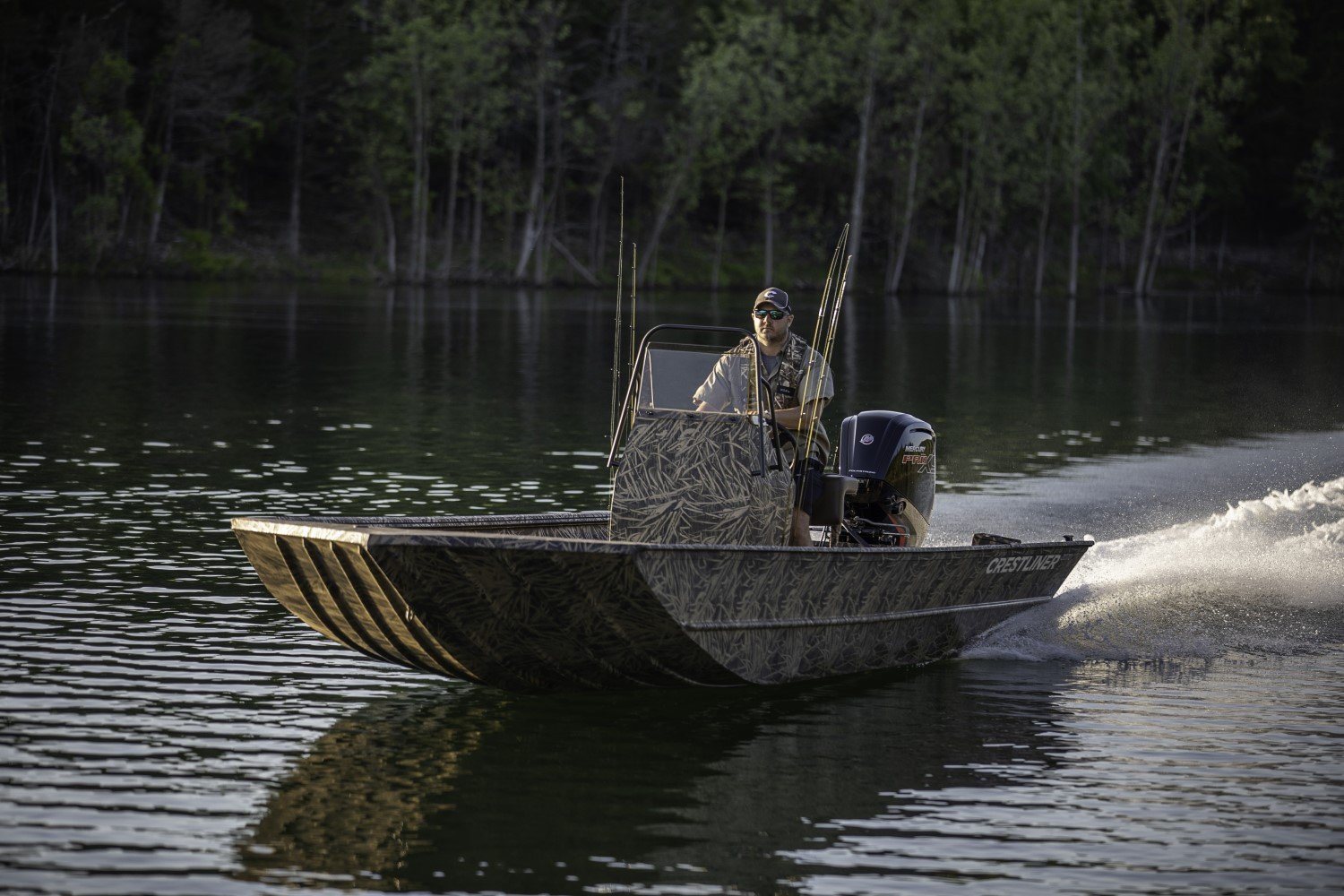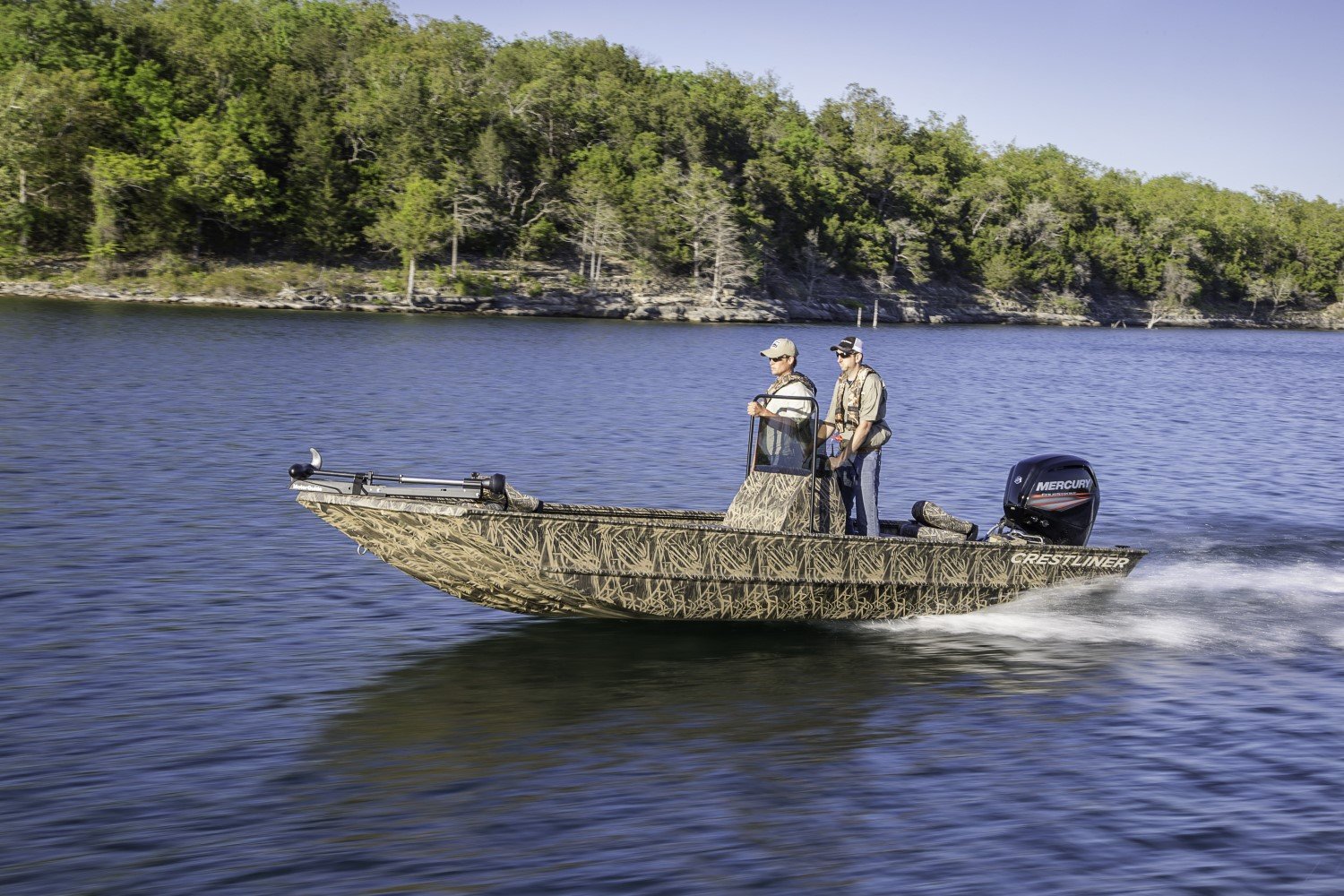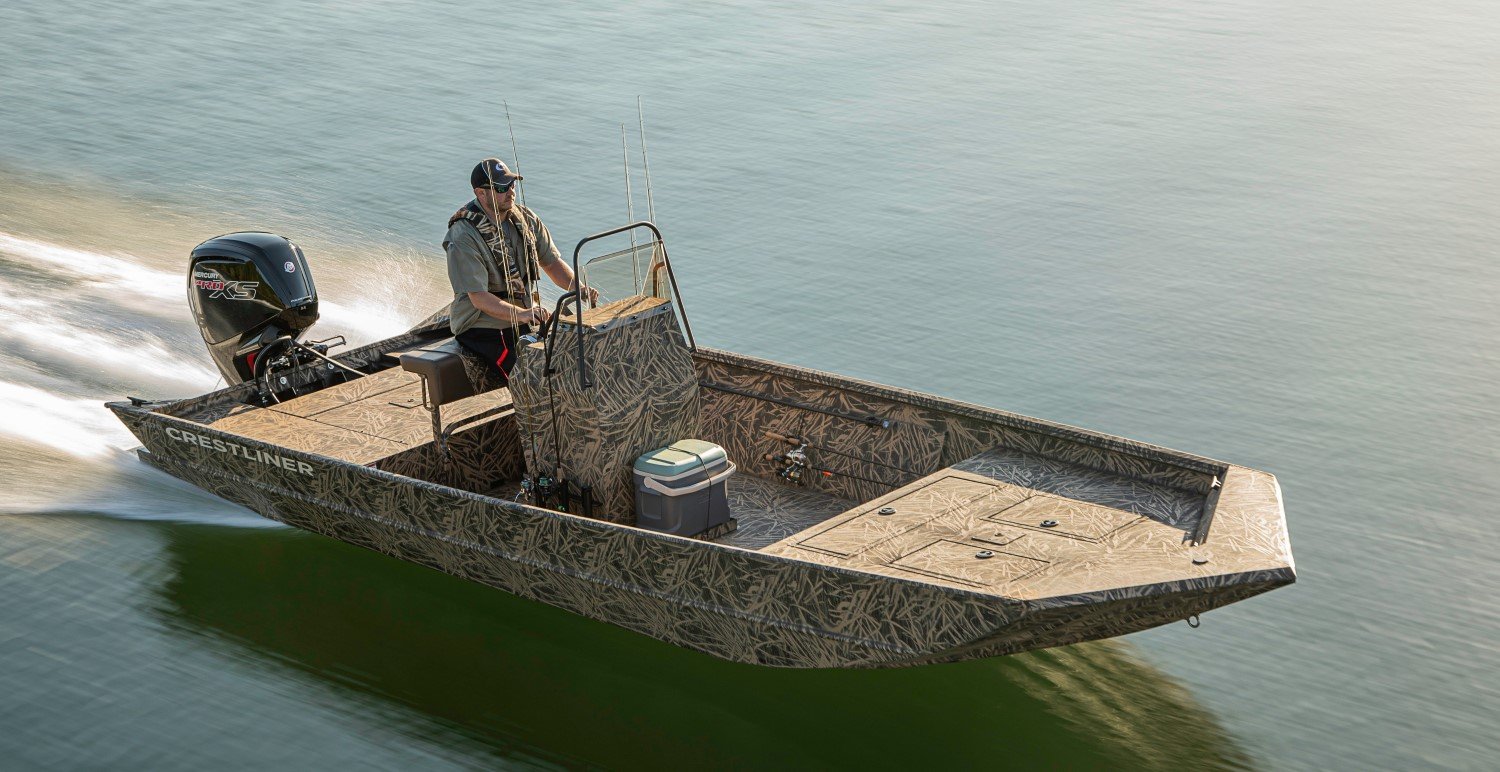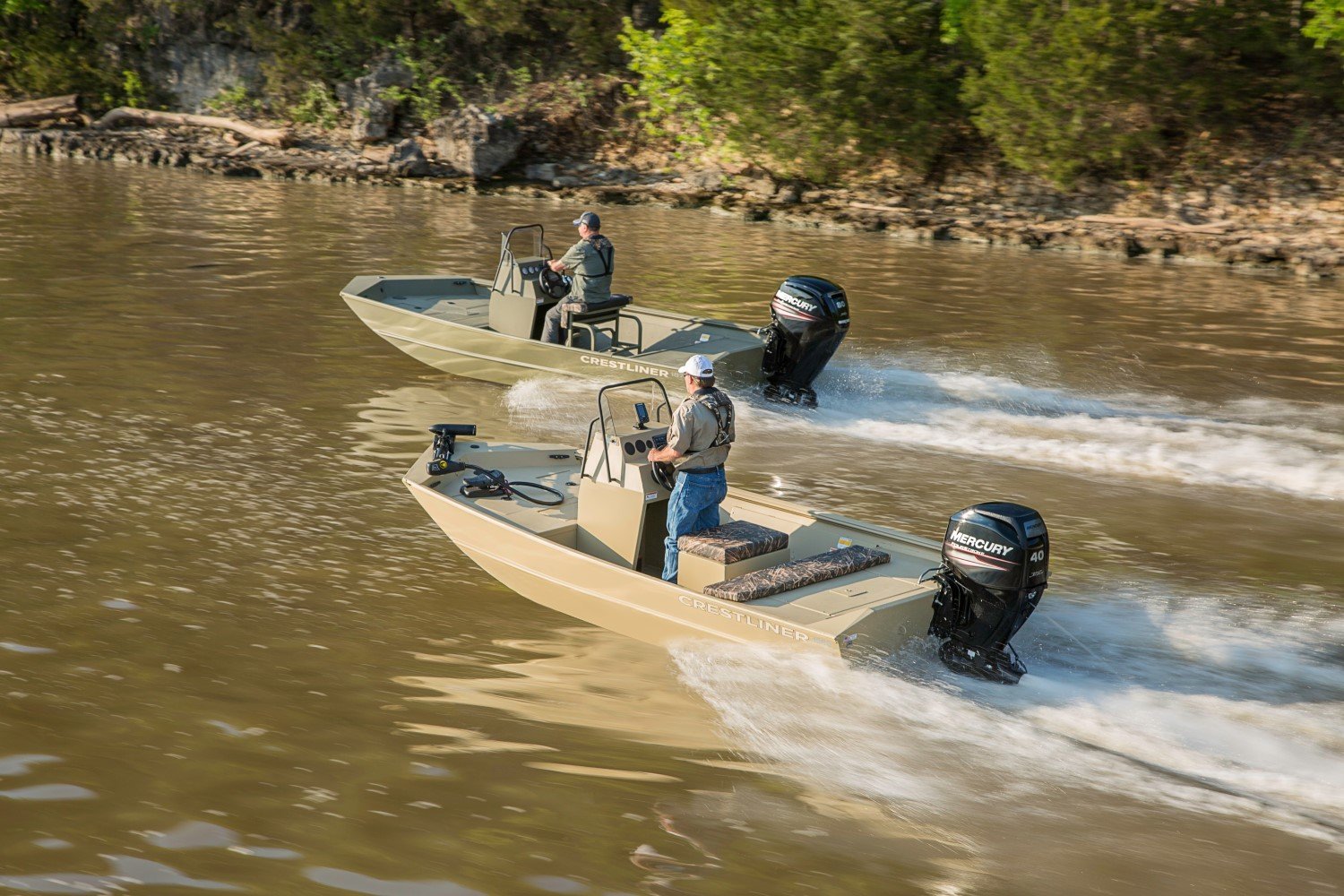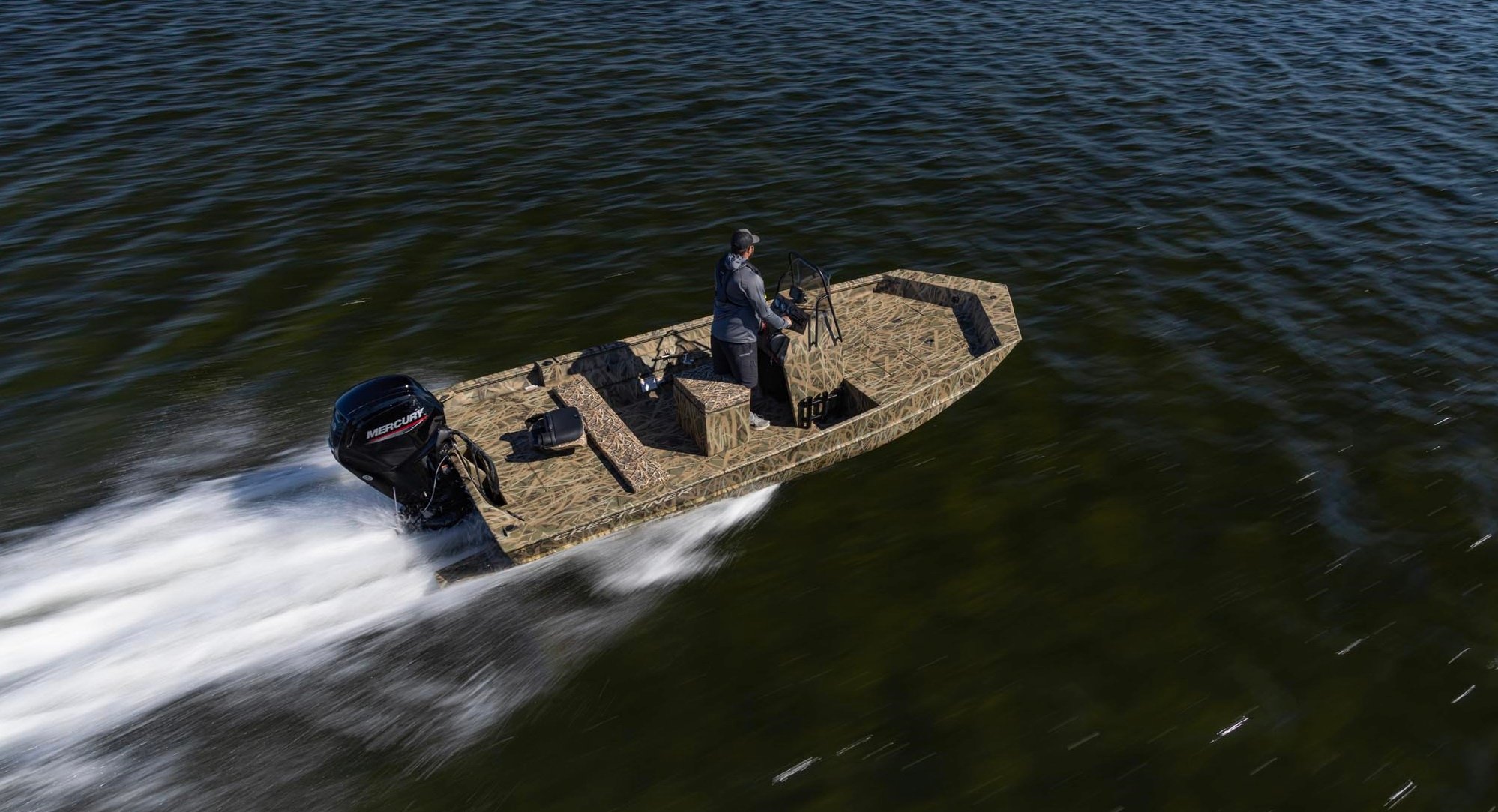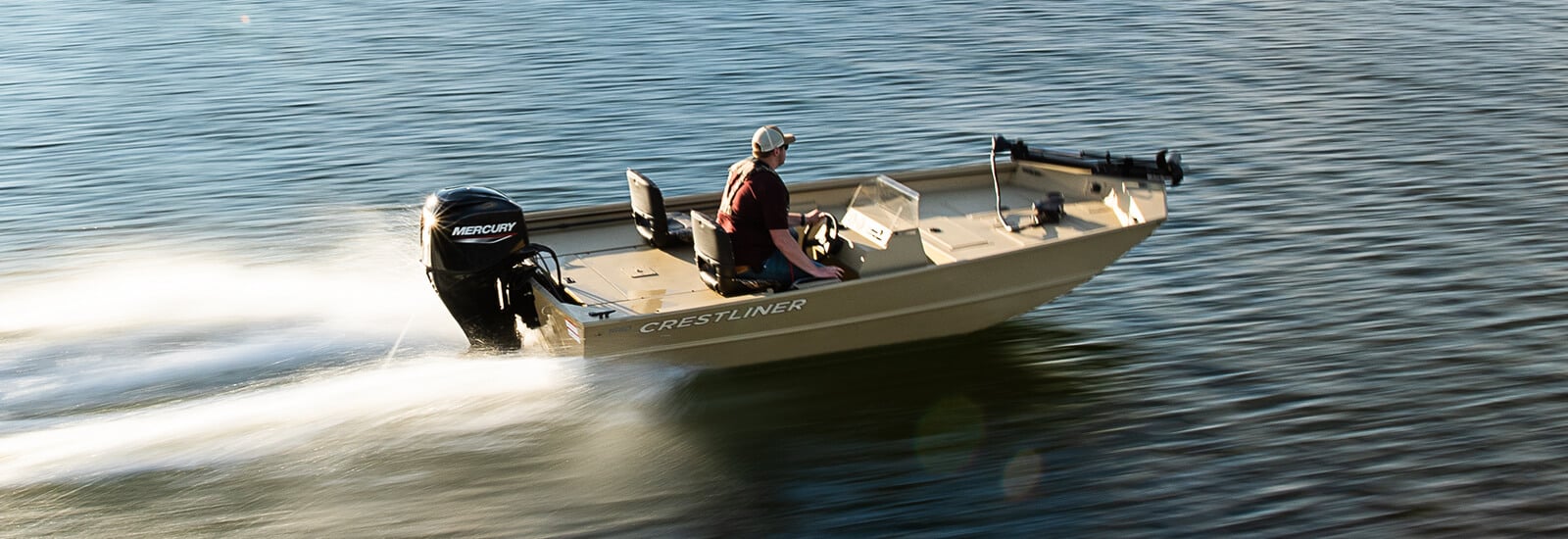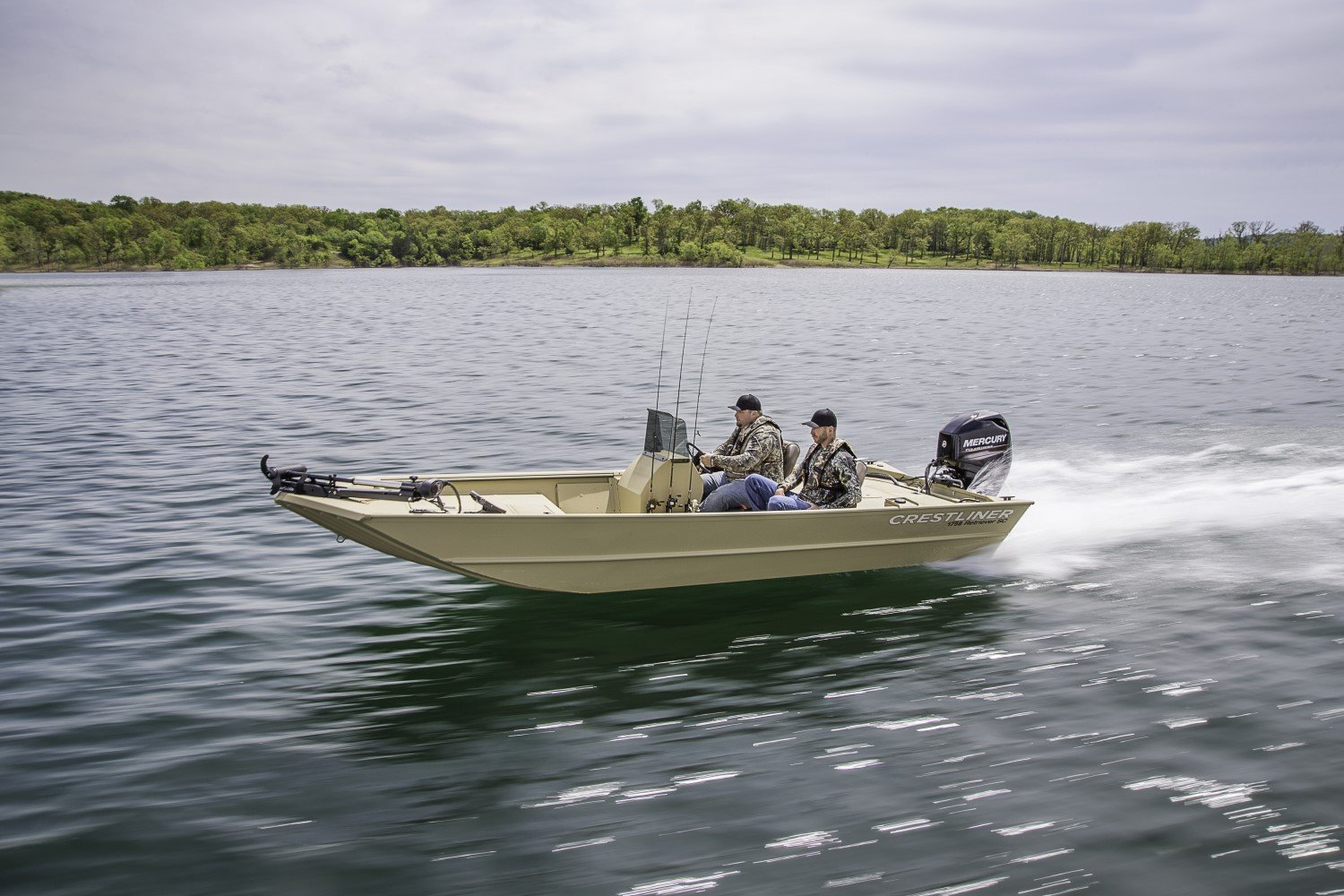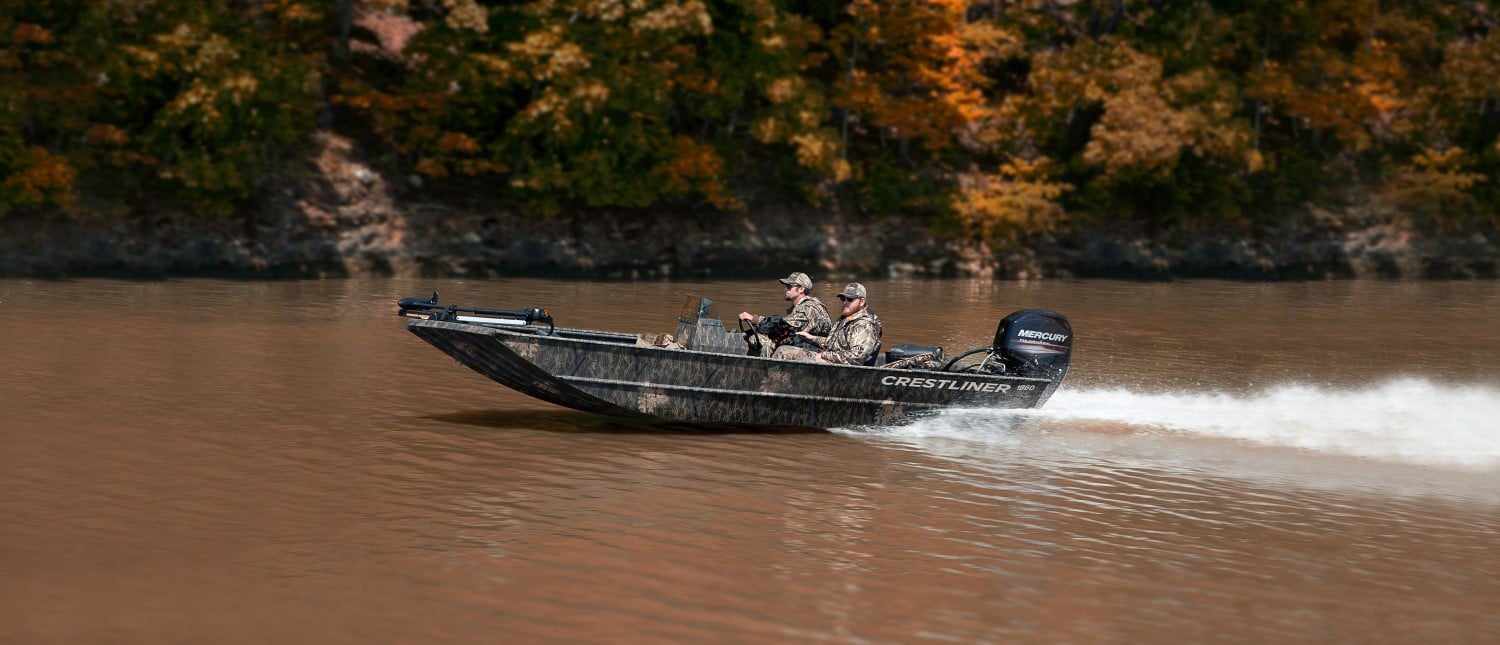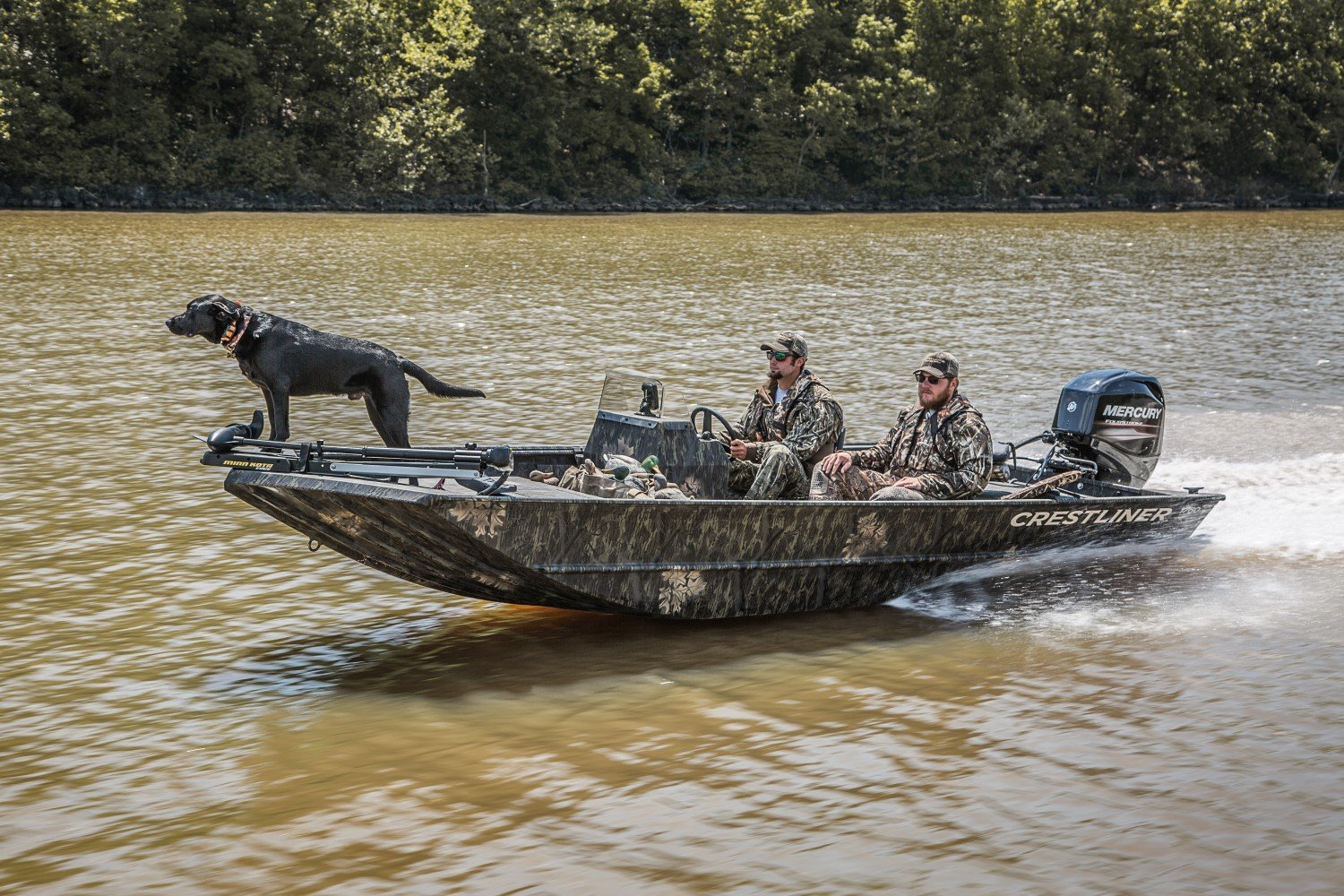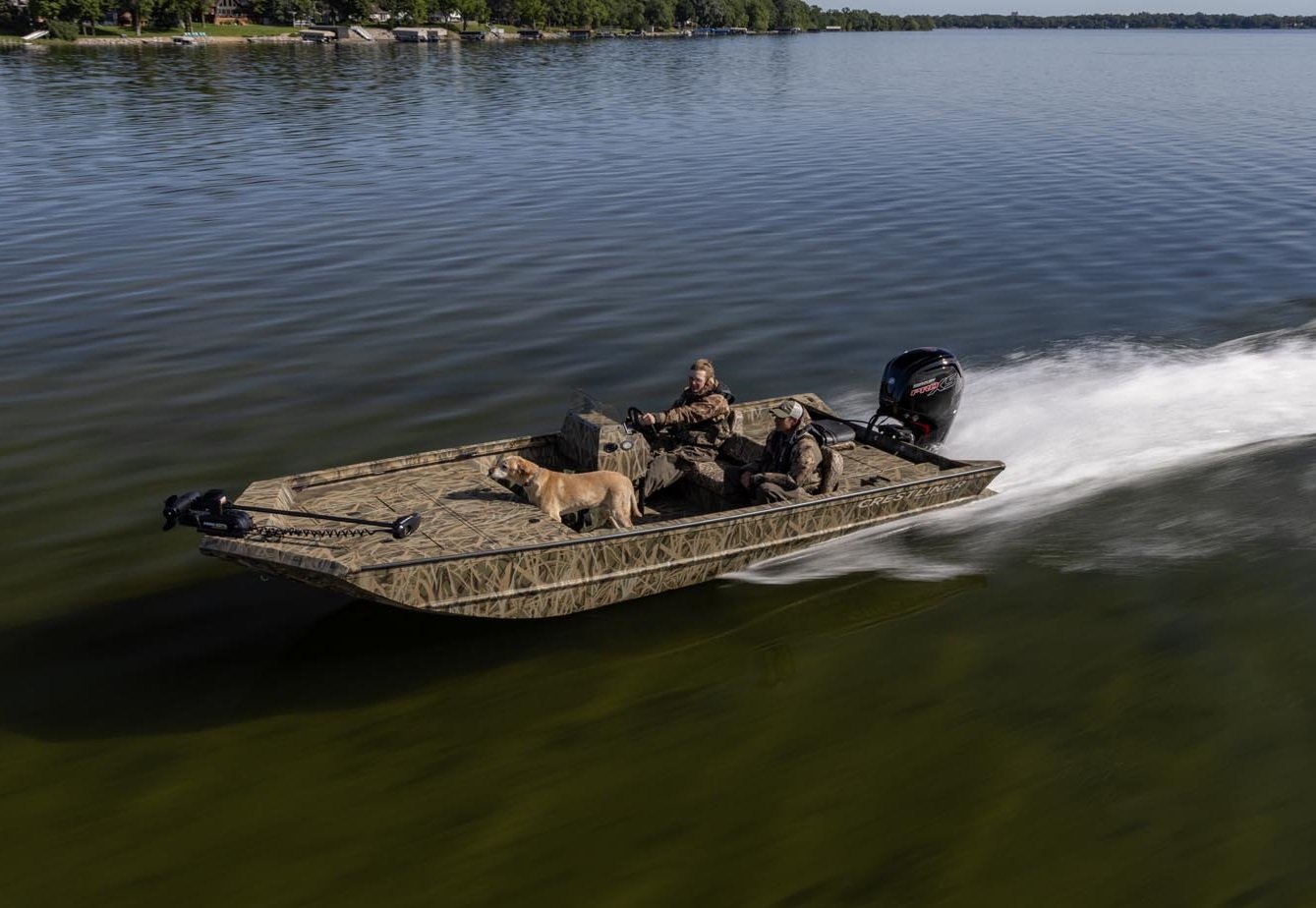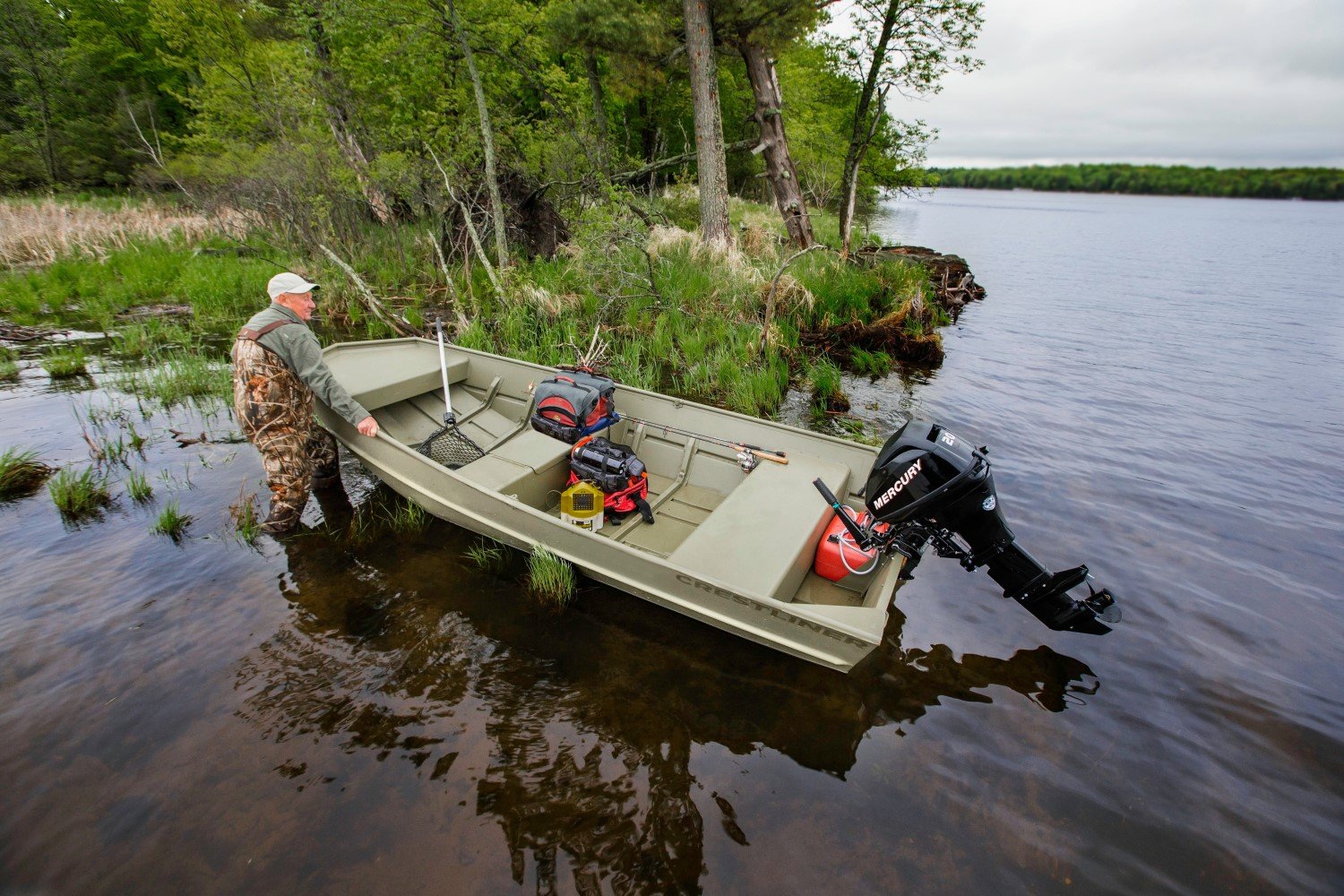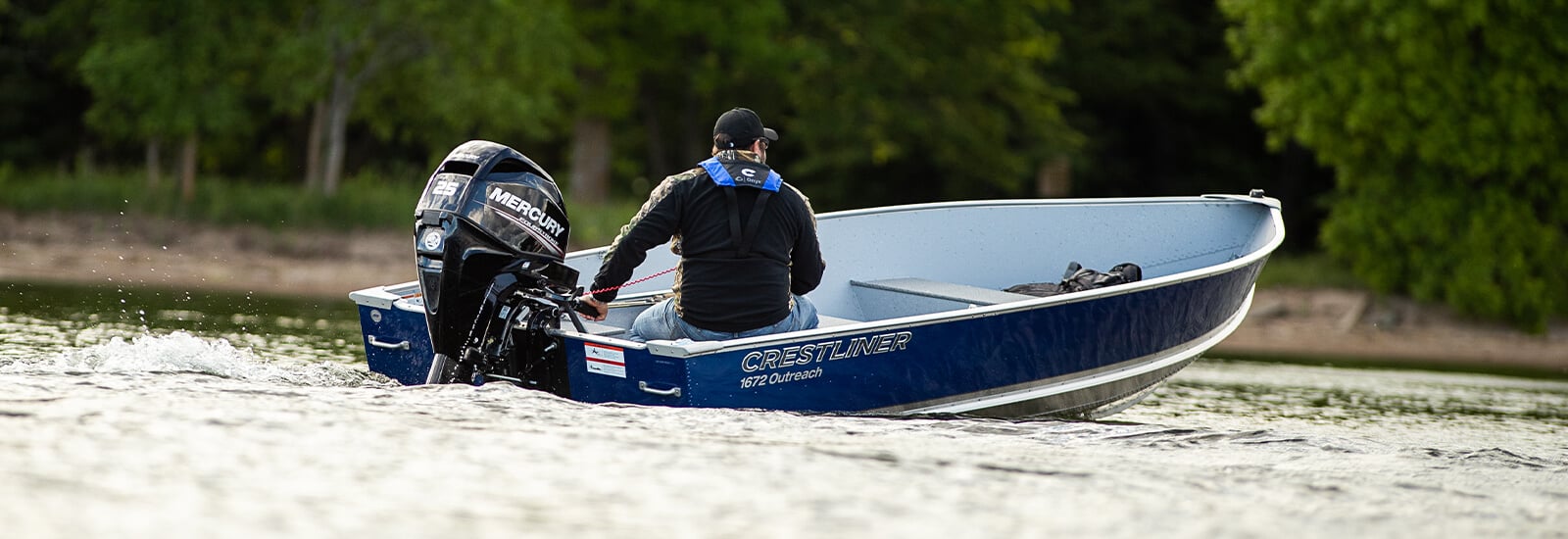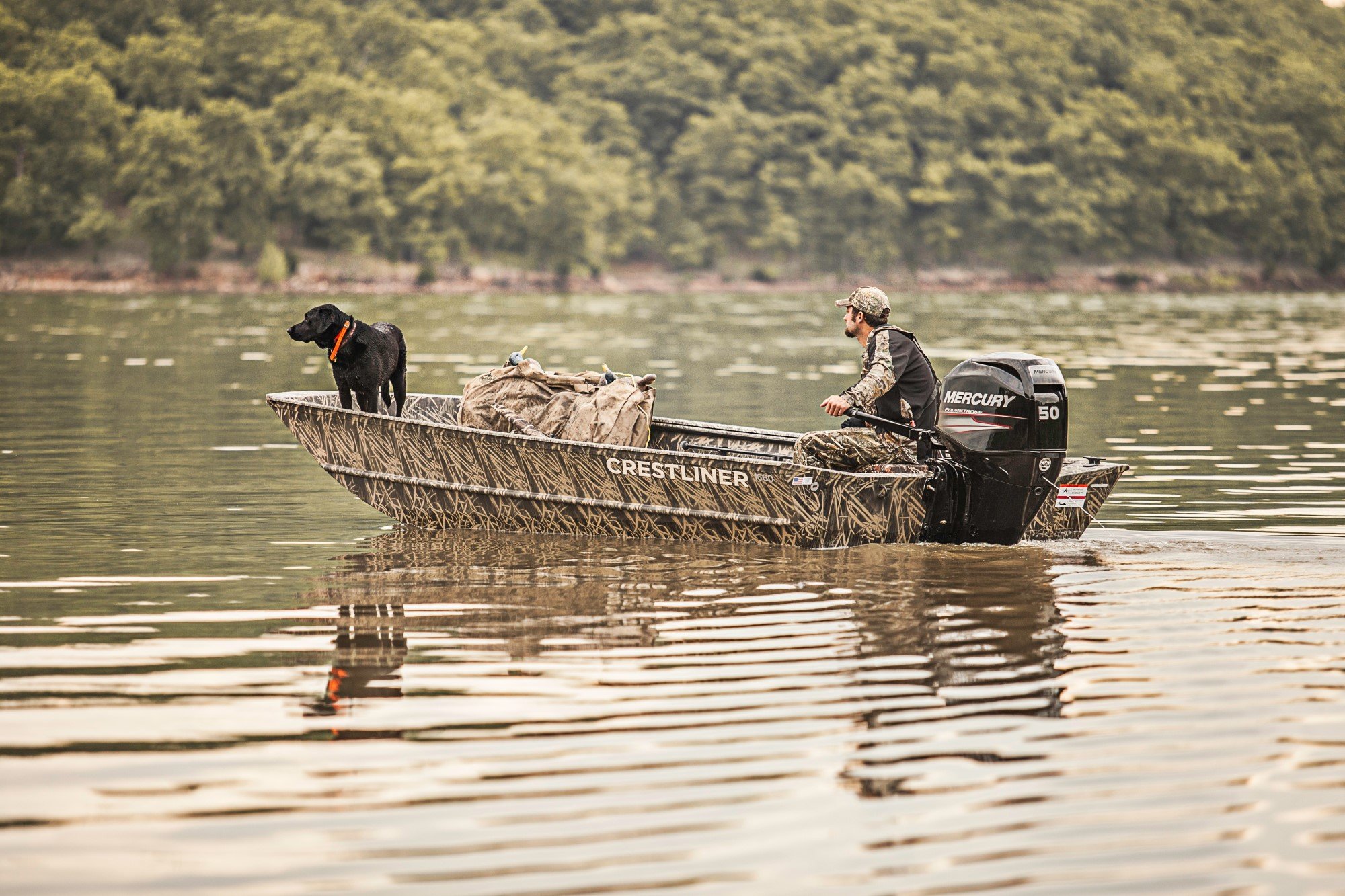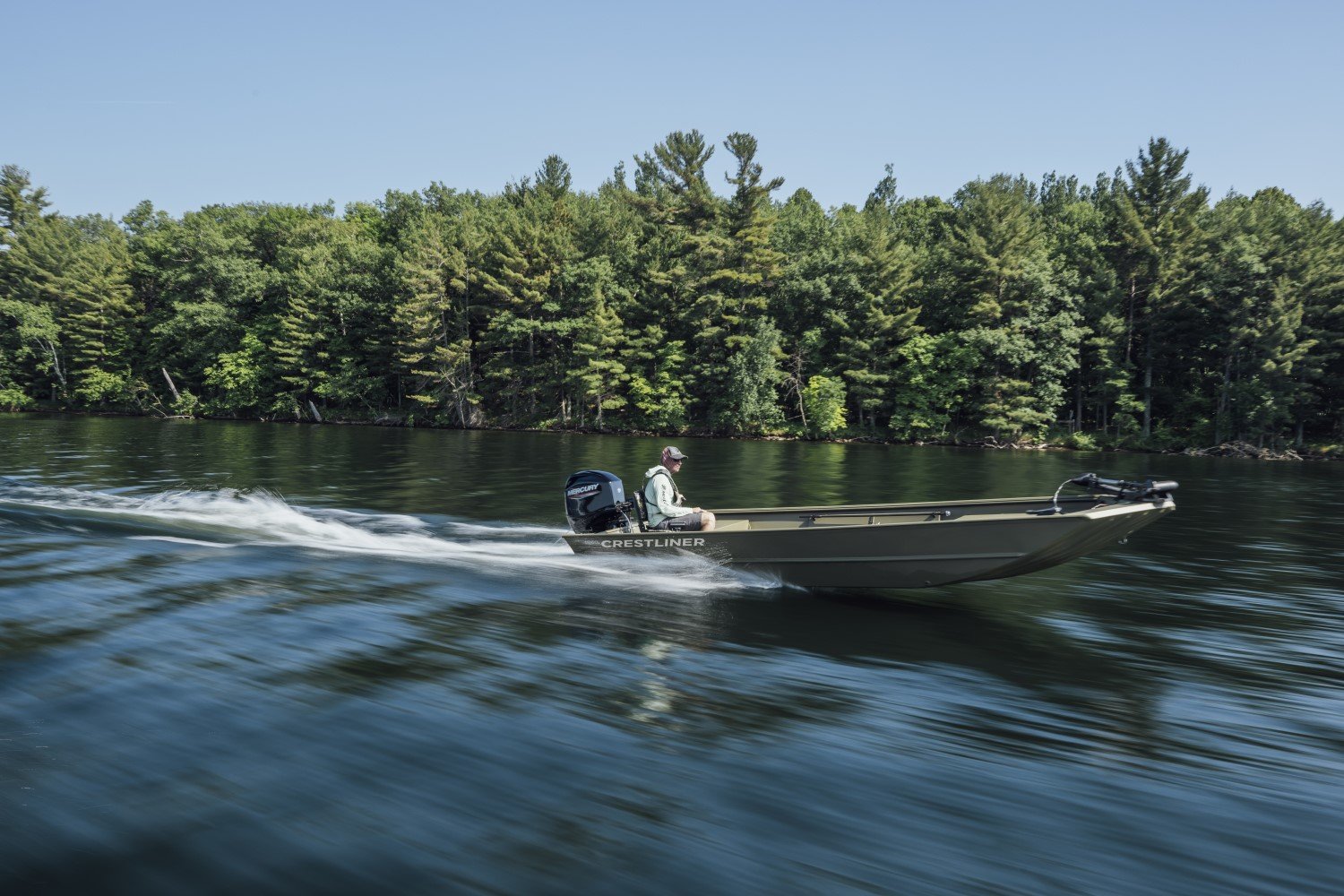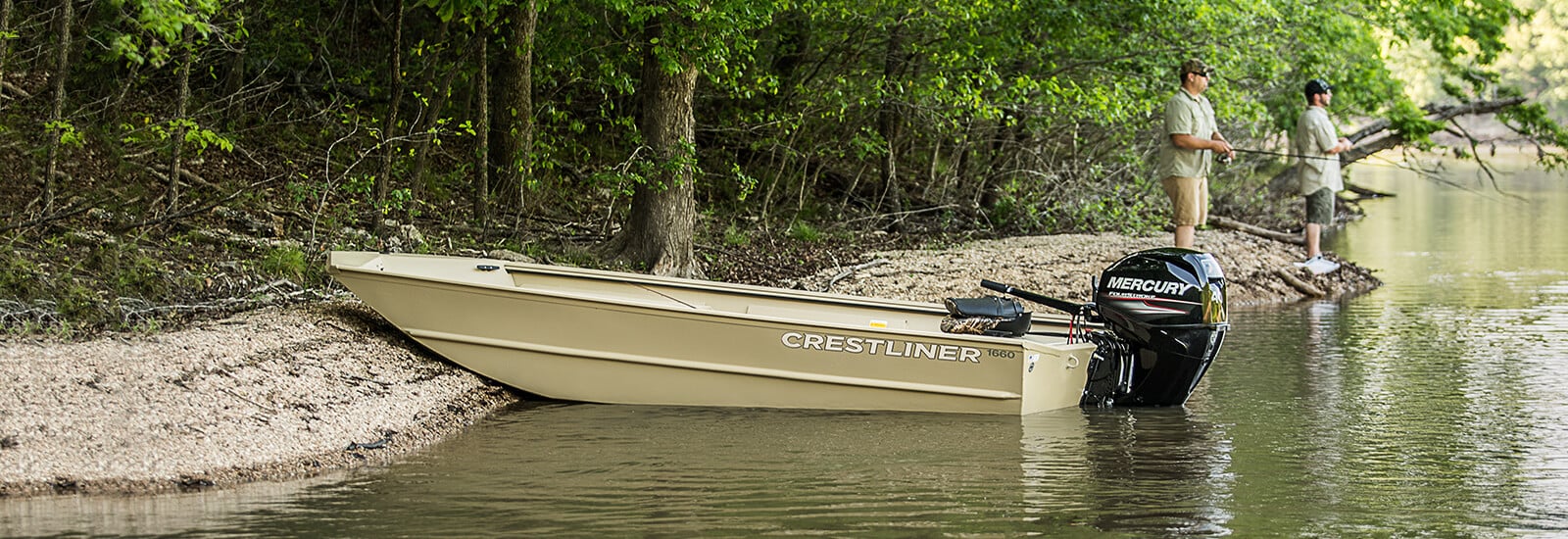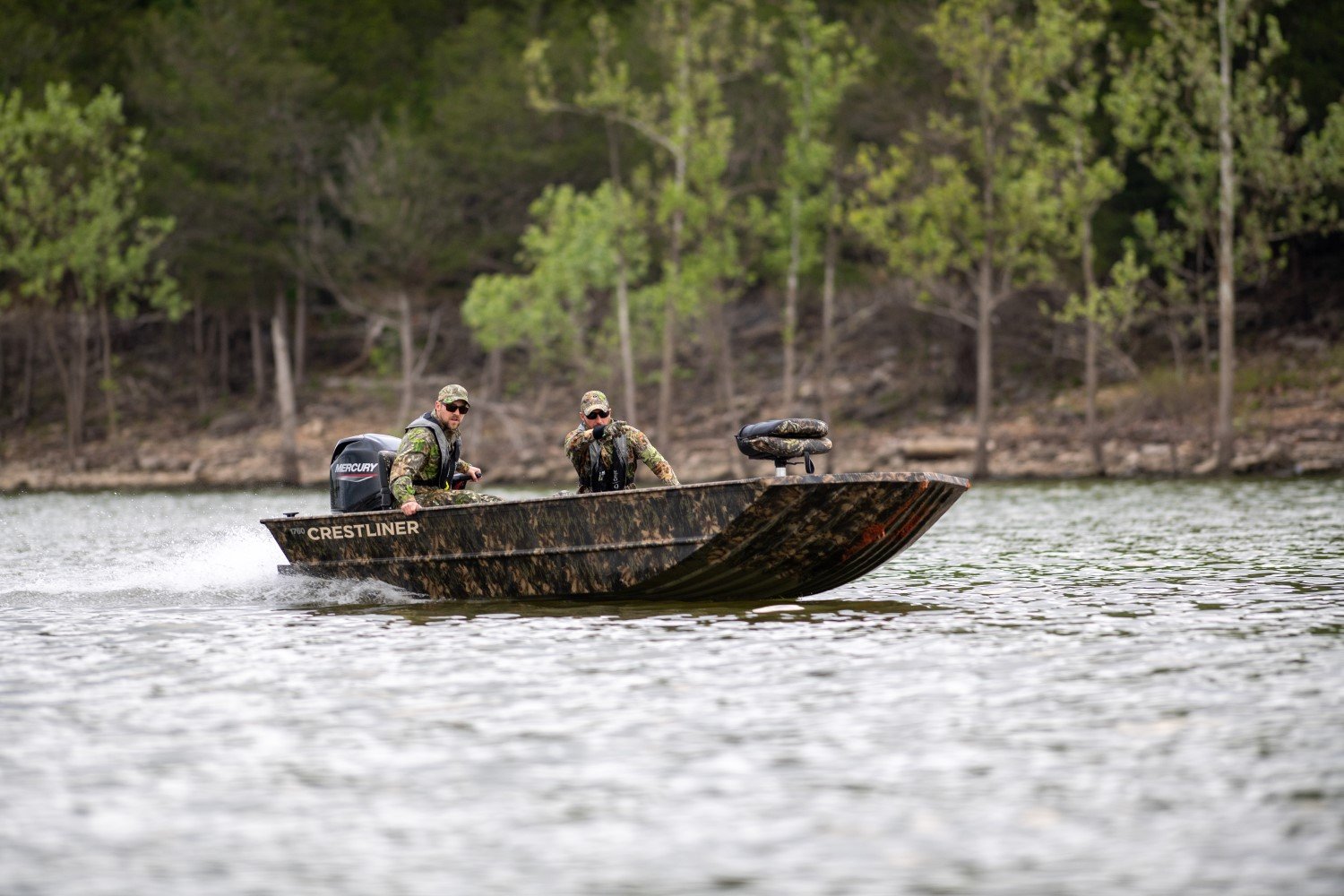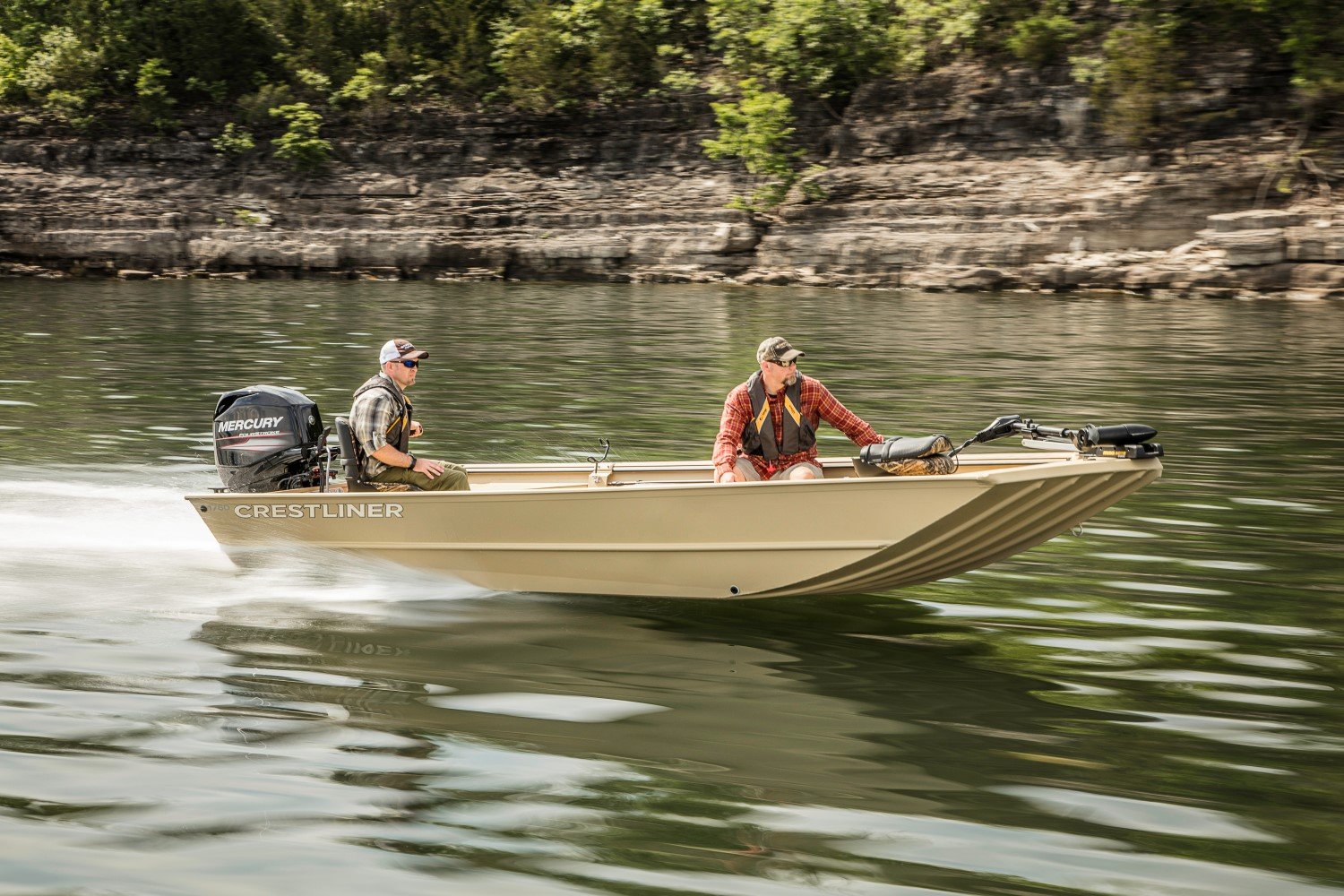John Cox is a professional bass angler and veteran of Bassmaster, FLW, and Major League Fishing tournaments. With multiple wins and nearly 60 top ten finishes, he’s a force to be dealt with wherever he makes a cast. John runs a Crestliner MX 21.
Jason Mitchell is a professional guide on Devil’s Lake in North Dakota and host of Jason Mitchell Outdoors on Fox Sports North and Midwest. He’s a walleye expert, credited with developing several products and techniques over his long career. He runs a Crestliner 1850 Pro Tiller.
A Little History...
Aluminum boats have come a long way since the first riveted, flat-bottomed jon boats of the mid-20th century, and Crestliner has been there all along the way. From the first duck hunting boats in 1946 to the sleek, all-welded, ultra-powerful Mod-Vs and Deep-Vs of the present, they have led the way in aluminum boat innovation. In this conversation between two of the top pros in North America, you’ll discover why aluminum fishing boats are approaching—and sometimes eclipsing—their fiberglass counterparts in performance, durability, and fishability.
Q & A with John and Jason
JASON: I’m primarily a walleye angler, and you’re primarily bass, and one of the things we’re both seeing is a resurgence of aluminum. Aluminum has always had a strong following for its durability, price point, and functionality. We’re seeing more anglers choosing deliberately to run aluminum instead of fiberglass. Why do you like to run an aluminum hull?
JOHN: One thing is that I love the fuel efficiency in the truck and in the outboard. But the big thing is that fishing shallow most of the time, I can get places in my aluminum boat that I would struggle to in a fiberglass hull. They’re super-wide, float super shallow, especially in the Crestliner MX series. You can walk all around that thing, and it doesn’t rock—it’s a completely solid fishing platform. It’s the best boat I’ve ever fished out of.
JASON: You’ve won a lot of money fishing professional bass tournaments by being willing to go where a lot of people won’t. Describe that.
JOHN: I honestly see myself as an average fisherman, so I need to get somewhere where the other guys aren’t, somewhere where they can’t get their boats. That’s just been my thing over the last 15 years or so, and somehow, I’ve won a couple of tournaments doing it.
JASON: So you draft less water, and it’s a ruggedness thing too. I mean, they’re made for getting into tough spots. Worst case scenario, you put a scratch on it and you fix it. But no one wants to scratch a fiberglass boat. If you’re about just catching fish, and the functionality of it, there’s a lot of things to love about aluminum. At one time—20 or 30 years ago—there was a lot of difference between glass and aluminum as far as performance and the smoothness and dryness of the ride. But when you look at the engineering today, with the Crestliner all-welded AP-X hull, that window, that difference in performance just keeps getting narrower and narrower.
JOHN: Every time I get a new Crestliner, it feels more like riding like a fiberglass boat. Every year, they do something to make it ride just a little bit better.
JASON: The best part of the John Cox story is pictures of you out of the boat pushing it over a shallow sandbar, or laying down in the boat squeezing through a culvert somewhere. It’s got to be satisfying beating guys who spent twice as much money on their boats.
JOHN: I have that feeling every time I get into my Crestliner. That feeling of that first jon boat tournament I fished. I know I look like I’ve aged, but inside I feel like I’m still that kid. And it’s amazing that now we have boats like the MX aluminum Mod-Vs that can compete at the highest level.

